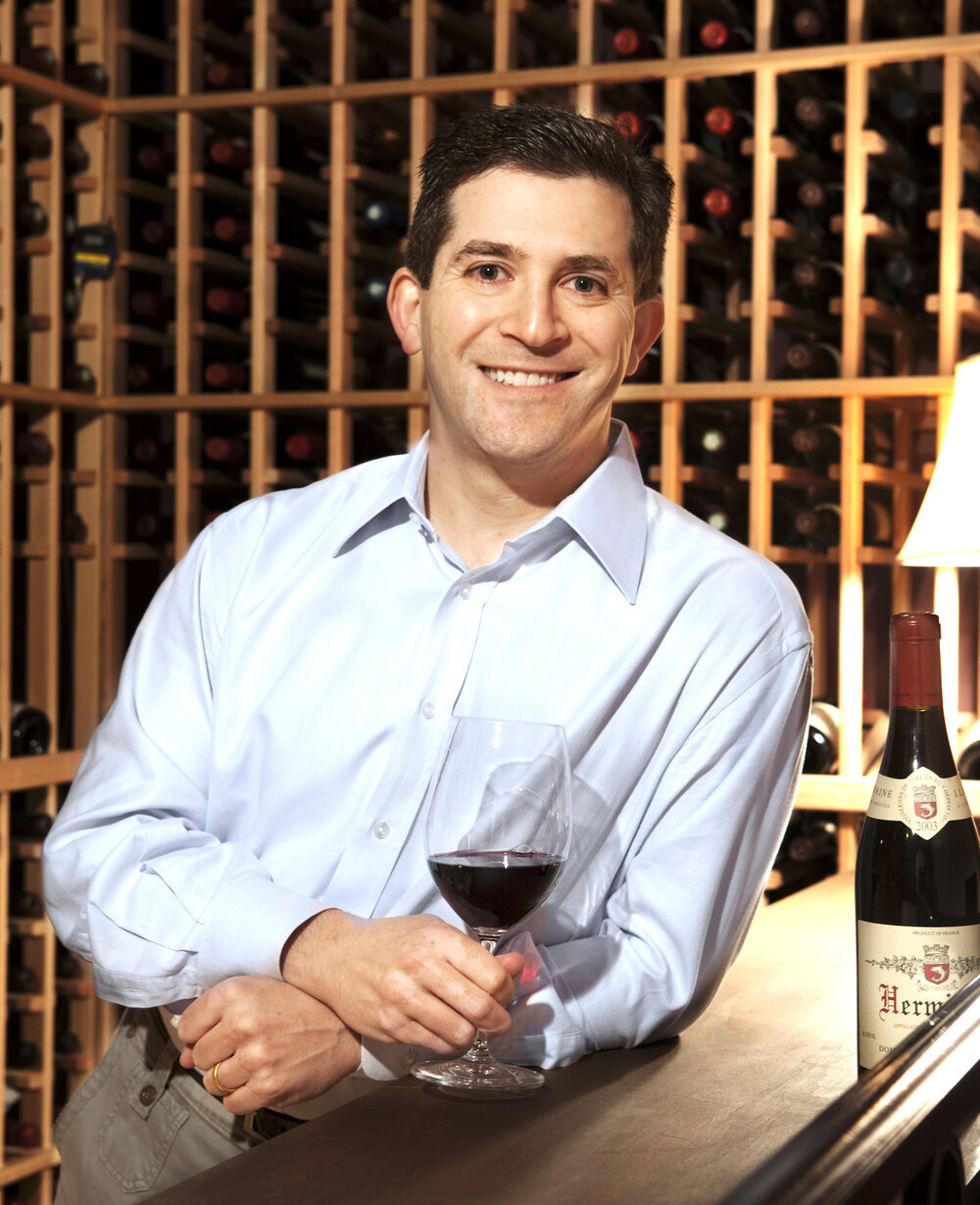
Whether you've got hundreds of bottles in your custom wine cellar or some gems stashed in a cabinet under the stairs, you won't want to miss this episode of The Wine Atelier Podcast featuring my interview with Eric LeVine (pronounced like the grape vine!), inventor of CellarTracker.
We've been using this powerful cellar management tool here at Chez Miskew since 2011, and, after researching other options over the years, CellarTracker is, hands down, the BEST and most reliable way to keep track of your wine.
CellarTracker began as a hobby for LeVine while he was working as a programmer for Microsoft. Like me, he caught the wine bug during a trip to one of Italy's most popular wine regions and quickly discovered he needed a way to document and manage his growing wine collection. After sharing his idea with fellow oenophiles, it quickly gained steam and proved to be MUCH more than just a hobby. He debuted the CellarTracker website in 2004 and it has been his full-time pursuit pretty much ever since.
In this episode, LeVine elaborates on how Cellartracker has evolved since the early days and how he has stayed true to his original vision. And I'm here to tell you, fifteeen years later, he's still as passionate as EVER about it! And you won't want to miss his future plans for CellarTracker and what he has planned for the big fifteenth anniversary coming up next month.
And did I mention, the yearly membership fee for CellarTracker is optional?
Please tune in NOW for all the details by simply clicking the "play" button on the slider above, OR click here to be taken over to iTunes where you can also subscribe to The Wine Atelier podcast and leave a review.
1.) For more information on CellarTracker, please visit the website by clicking here.
2.) For information on any upcoming CellarTracker events, please subscribe to my weekly newsletter here.
– To share your thoughts on this episode, please leave me a note in the Comments section below. And to view previous episodes of The Wine Atelier Podcast here on my website, please click here.
– To spread the word about The Wine Atelier Podcast, please share this link on Twitter, Facebook, Instagram and/or any other social media platform of interest.
– If you enjoyed the show, please click here to go to iTunes and subscribe to so you don't miss a thing - AND - leaving your honest review of The Wine Atelier podcast on iTunes would also be greatly appreciated!
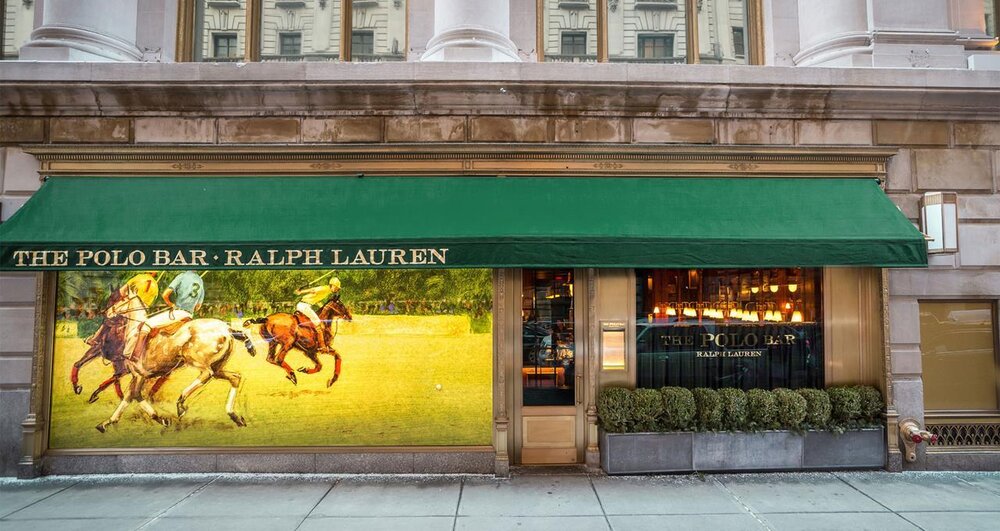
"I'm drawn to the kind of food that people truly enjoy - vibrant food that people want to return to time and time again" - Ralph Lauren
I was thrilled for Meghan Markle, aka the Duchess of Sussex, when I heard that the American leg of her Baby Shower tour included one of my favorite restaurants in New York City, The Polo Bar!
This exclusive Midtown eaterie, located just off 5th Avenue, is one of Ralph Lauren's four restaurants (the others are in Chicago, London and Paris) and has quickly become THE spot to see and be seen in NYC. It is currently a favorite of celebrities including J.Lo and A-Rod, Gwenyth Paltrow, Bradley Cooper and Andy Cohen.
The first time the Hubby and I dined at The Polo Bar we were smitten! The welcoming exterior, complete with a beautiful Henry Koehler, polo-inspired mural, classic green awnings and manicured boxwood topiaries, set the tone for the elegant experience to follow.
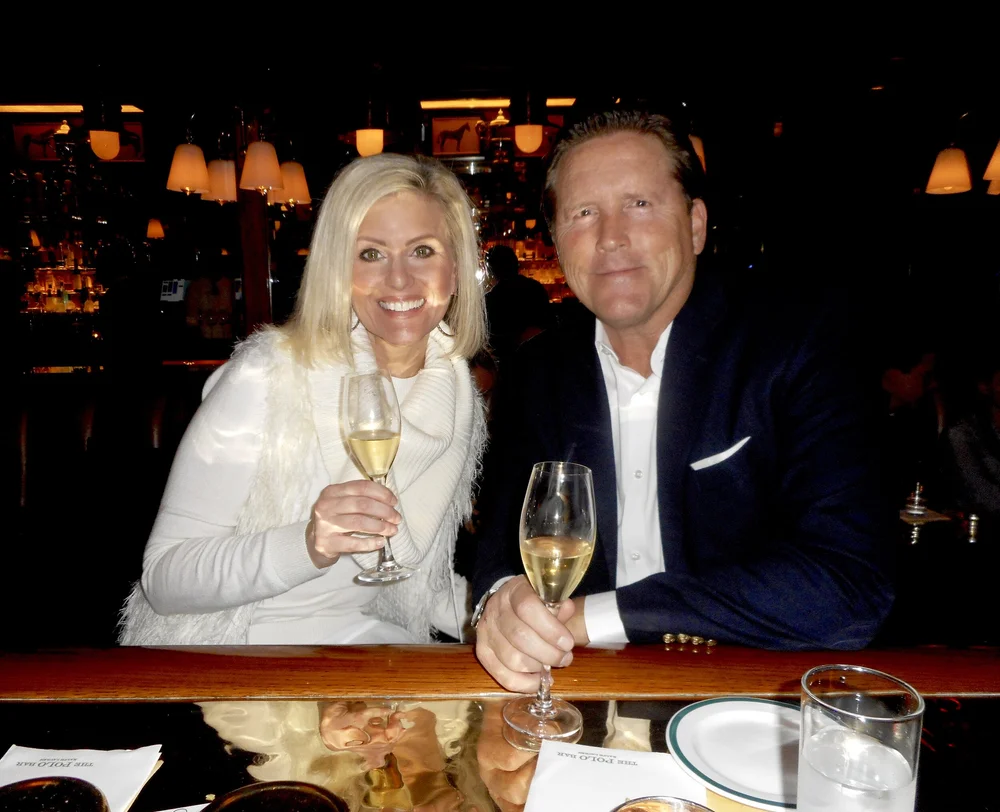
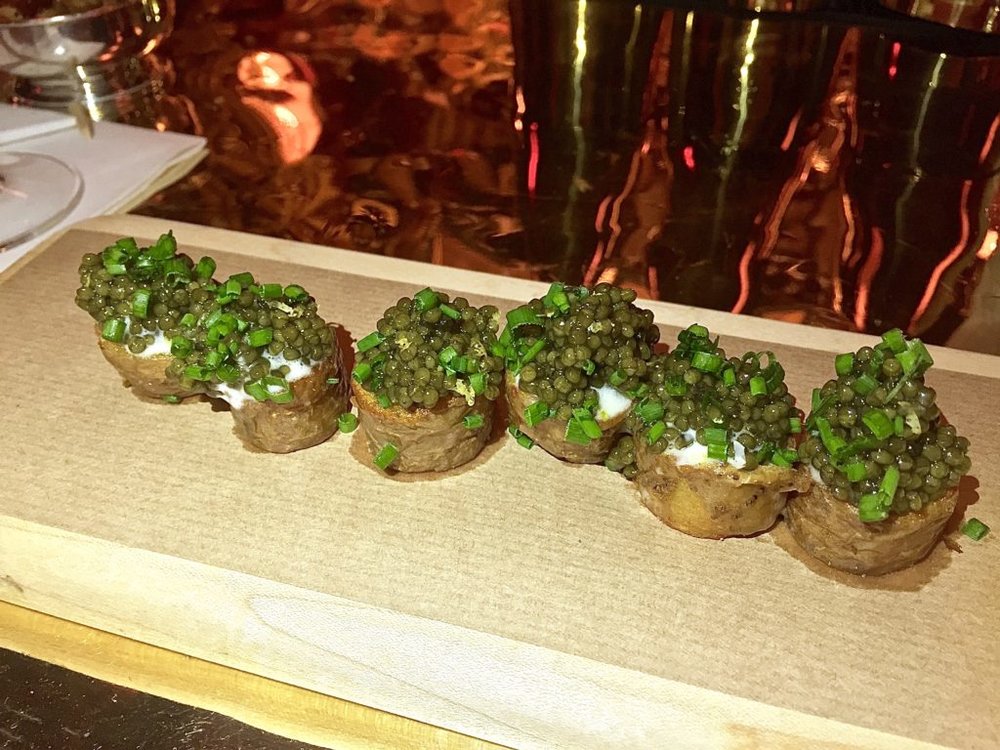
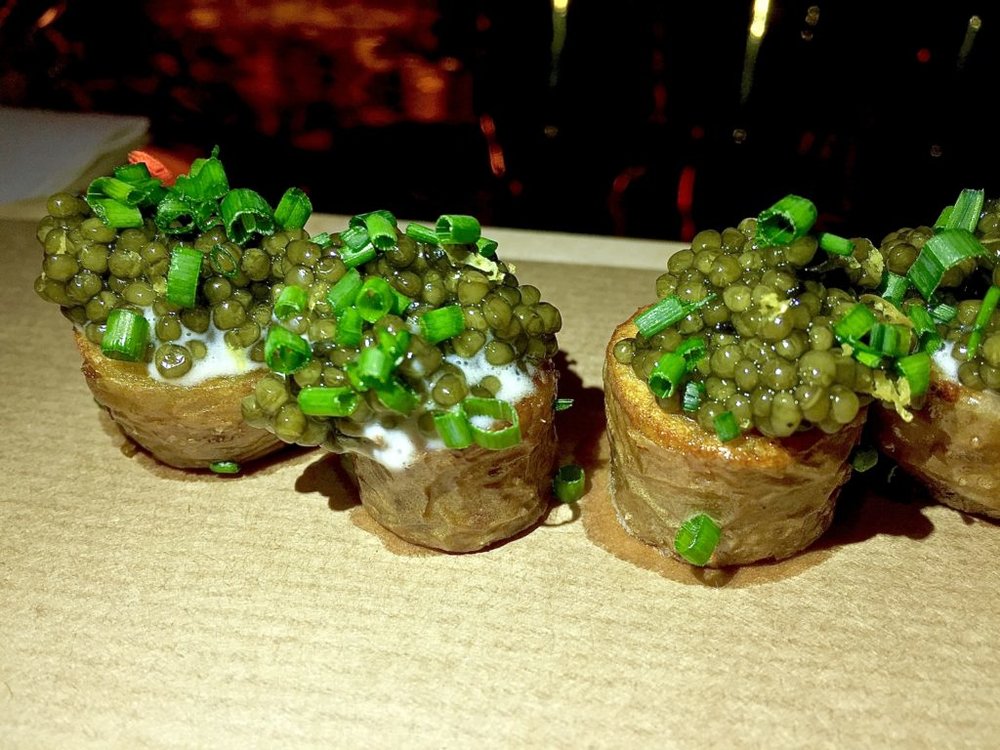
Ironically, The Polo Bar is located in the same site as the legendary NYC restaurant La Côte Basque. Dubbed "a high-society temple of French cuisine," by the New York Times, it was a favorite of celebrities such as Frank Sinatra, Babe Paley and Jackie Kennedy Onassis. La Côte Basque thrived for 45 years until it closed its doors in 2004.
As a Pharmaceutical sales rep in Manhattan in the late 90's, I hosted my first physician dinner at this esteemed establishment. Needless to say, it was extremely well-attended and one of my first experiences with fine dining in NYC. It sure felt good to be back to experience the location's most recent incarnation.
After properly checking in at the front door (more on that later!), we stepped into the warmly lit, equestrian-themed, 36-seat bar area complete with glamorous, gilded light fixtures and mirrored walls. The enchanting ambiance was greatly appreciated after our day of travel (including a 5 hour flight delay following a bird strike!).
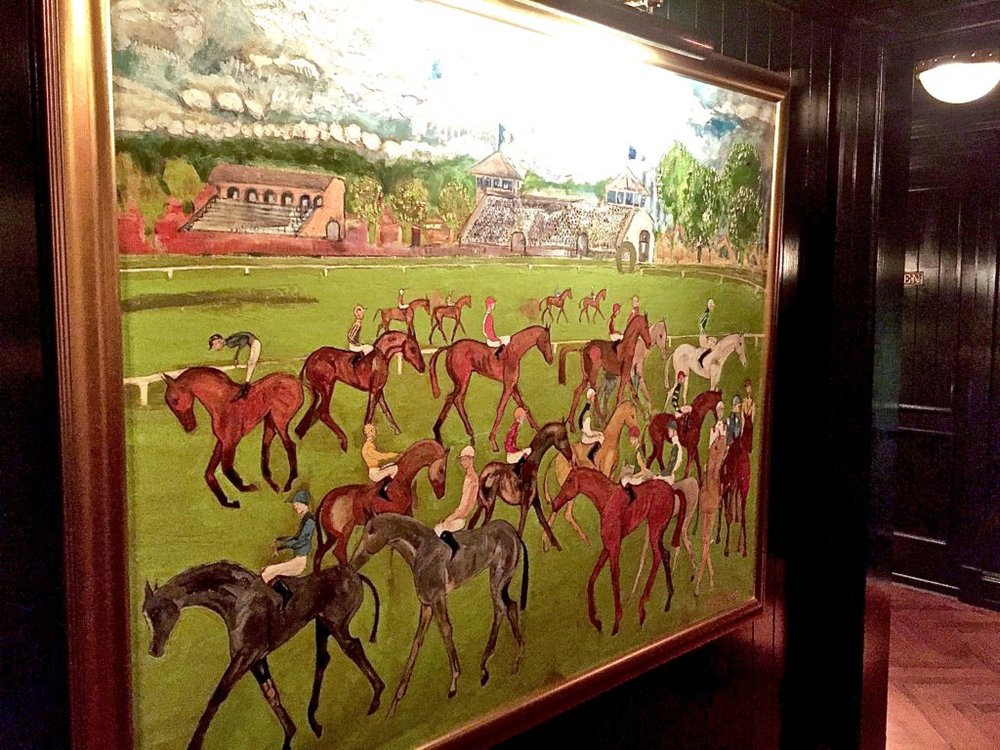
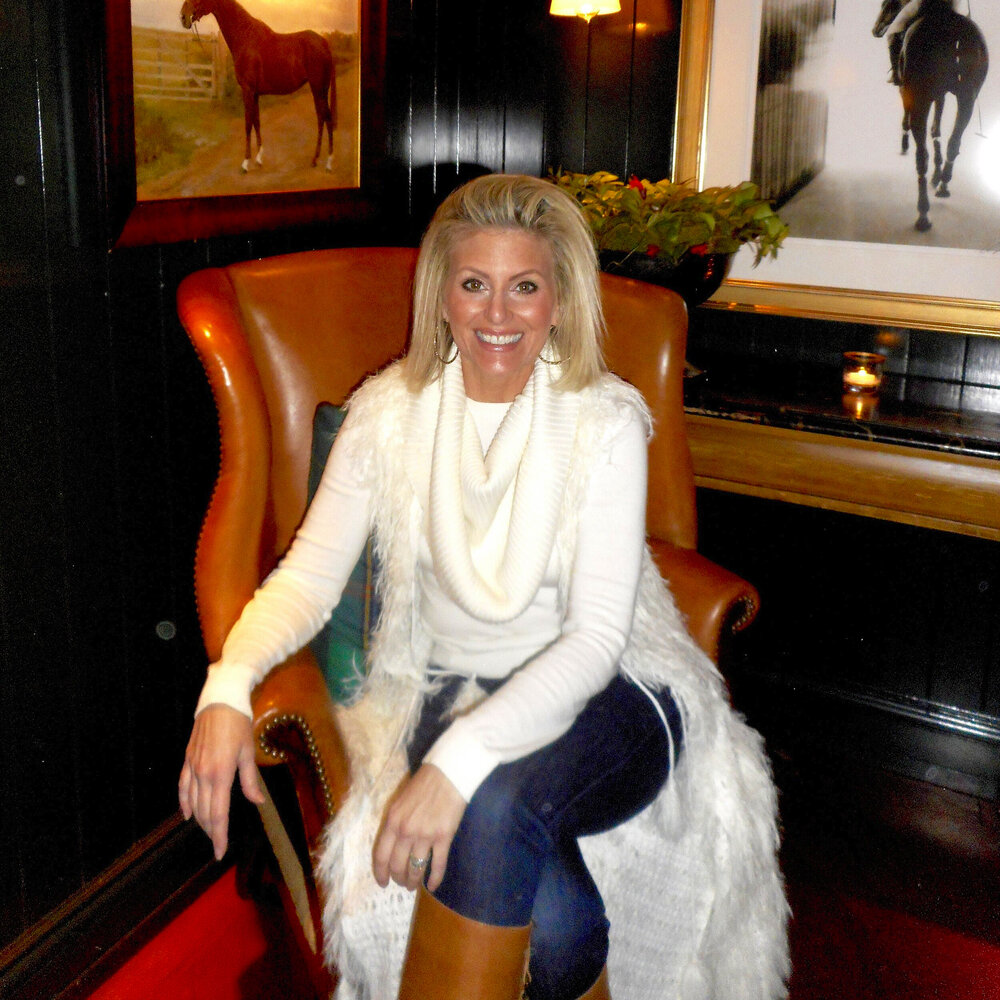
Soon we were seated at the bar sipping chilled glasses of Veuve Cliquot Champagne and sampling a selection of delightful bar snacks. Savory Pigs in a Blanket slathered with spicy mustard never tasted so good, while the divinely decadent Caviar & Fingerling Potatoes were the perfect accompaniment for our Champagne. After sufficiently priming our palates, we were summoned from our reverie by the hostess who guided us downstairs to our table.
The dining room exuded a handsome, masculine elegance with rich, Mahogany paneling, cozy leather banquets and sumptuous emerald green walls. Tartan pillows and gold sconces completed the look and no Ralph Lauren establishment would be complete without Lauren's personal totem, the horse.
The Polo Bar dining room features a profusion of gold framed, equestrian-themed portraits and photos accented by equine accoutrements such as burnished leather saddles, polo mallets and helmets. Together, these items add rich texture, depth and dimension to the inviting space.
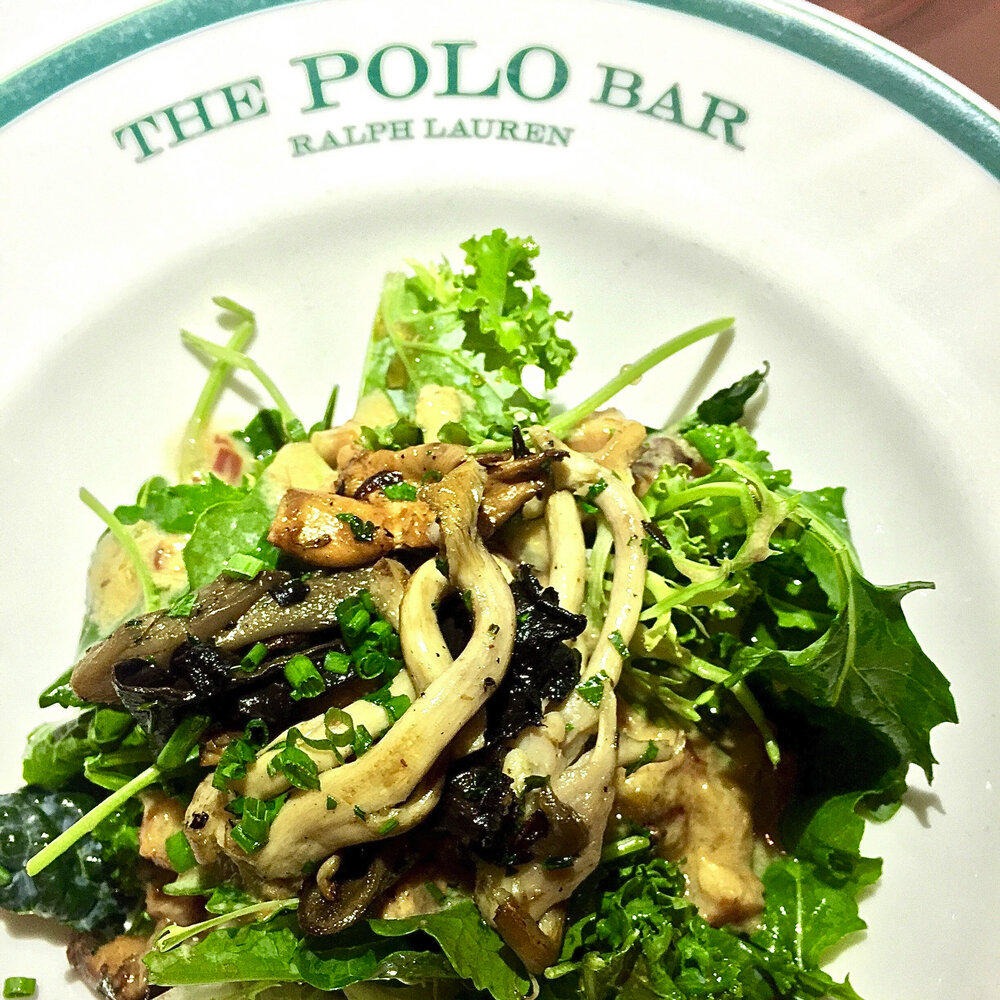
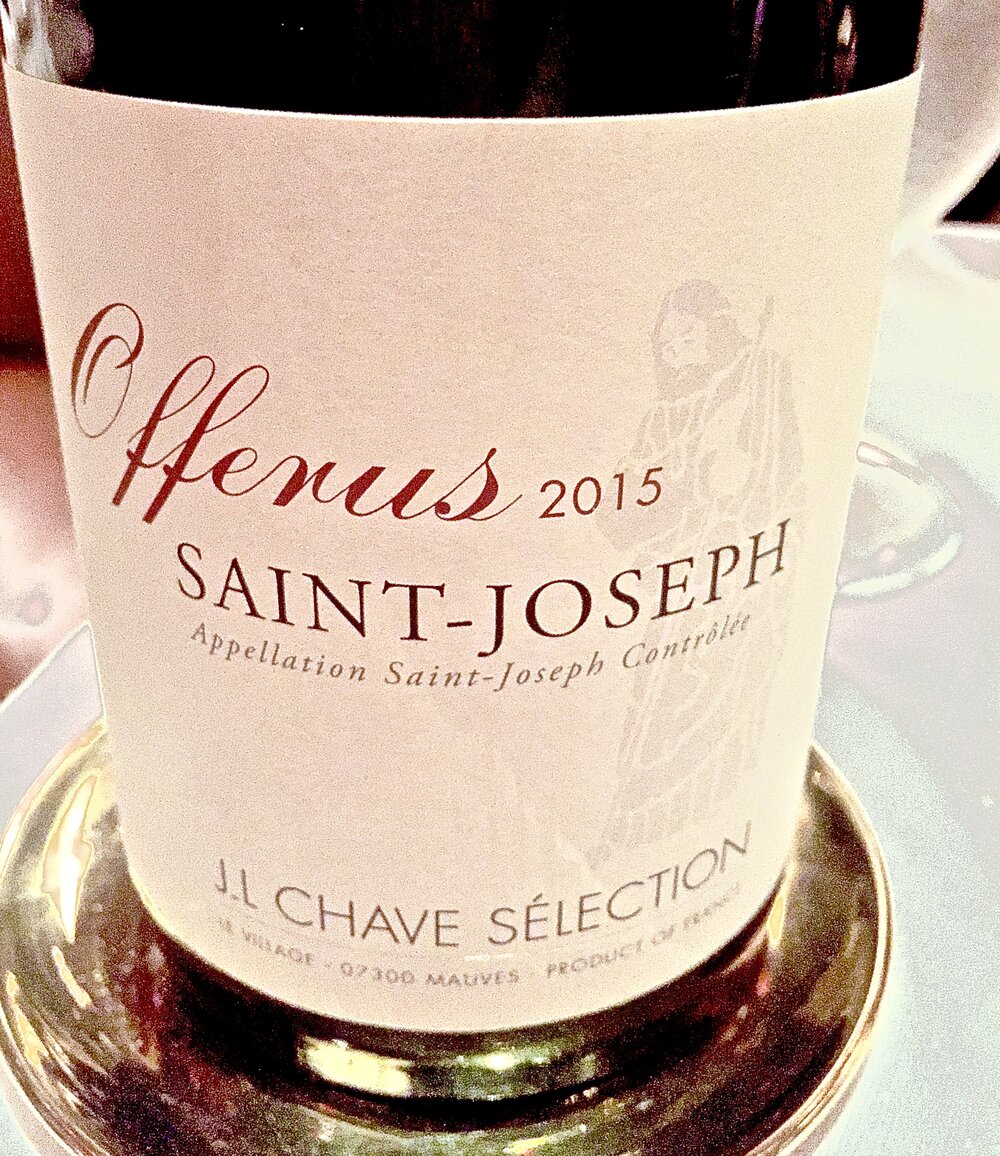
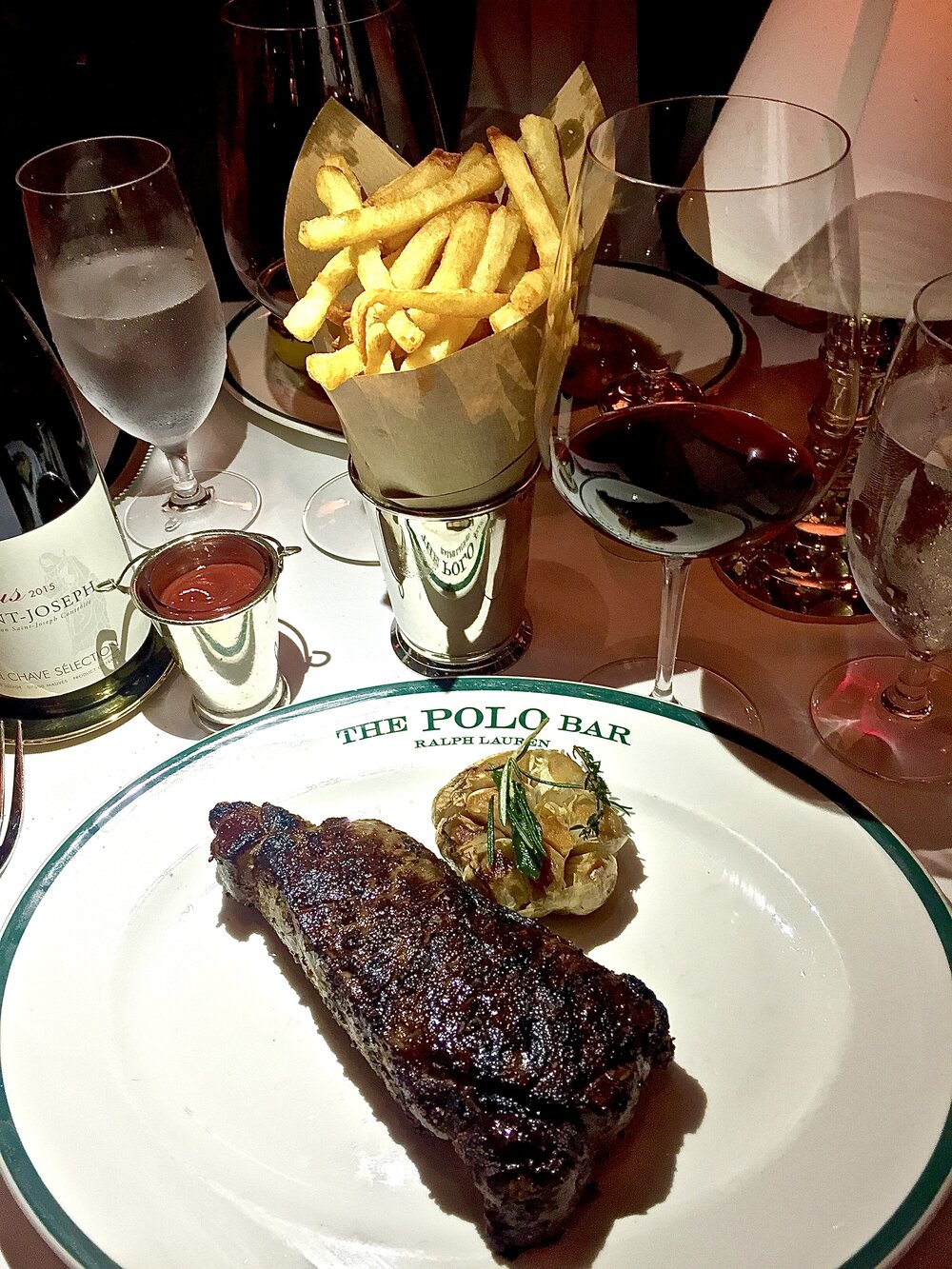
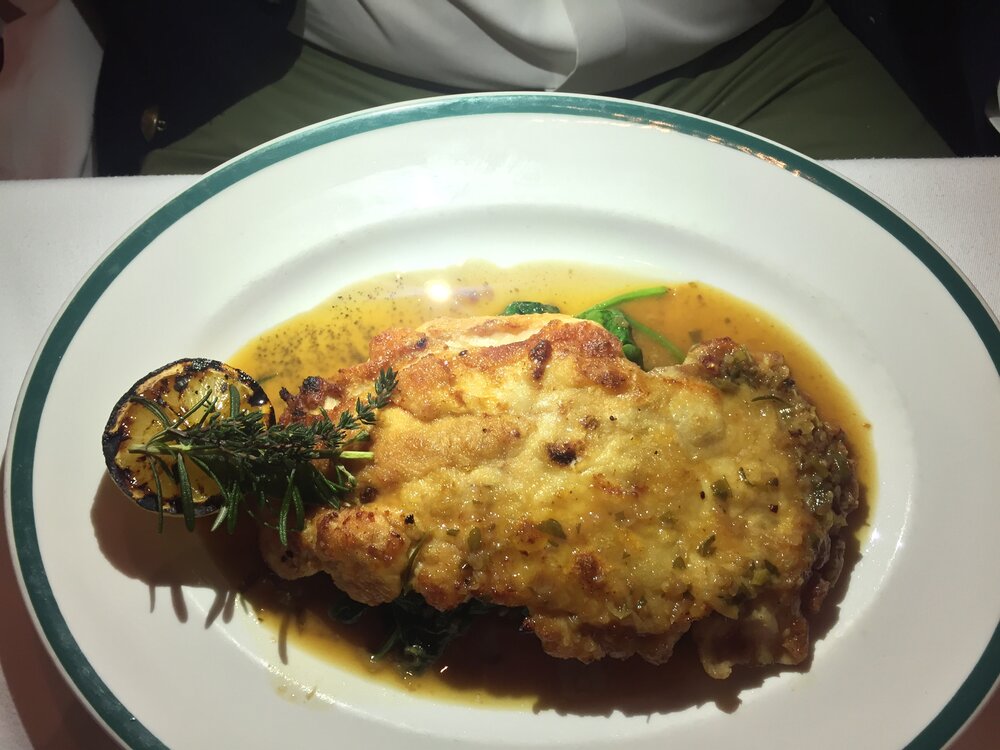
The cuisine at The Polo Bar is distinctly American, and features causal, yet chic fare with specialties including the RRL Hot Dog, Ralph's Corned Beef Sandwich, and the famed Polo Bar Burger. Steaks are sourced from Lauren's own Double RL Ranch in Colorado when availability permits. Service was also spot on and our servers at the bar and our table guided us towards food and wine selections we were supremely satisfied with. No matter where we dine, we always ask the staff to share their favorite dishes and wine recommendations, nobody knows the menu like they do!
We enjoyed a delicious bottle of the 2015 Jean-Louis Chave Saint-Joseph "Offerus" with our meal. This full-bodied, Syrah-based red wine from France's Northern Rhone Valley featured smoky, spicy, black fruit accented flavors that paired beautifully with our dishes, especially the Warm Mushroom and Kale Salad, with a rich bacon-infused dressing!
The Hubs and I shared the juicy, flavorful NY Strip Steak($55) with Hand Cut Fries and the succulent Chicken Under a Brick ($34) with Sauteed Spinach, Lemon & Rosemary. The steak was cooked to a perfect medium-rare and served with a generous serving of heavenly, crispy fries that were completely addictive. The ketchup and fries were both served in silver julep cups which was lovely, glamorous touch.
One dish Steve and I are both passionate about is roast chicken. Whenever we visit a new restaurant, the roast chicken is always one of our selections because we've found the quality of a restaurant's roast chicken is generally a good gauge of the menu as a whole. I'm happy to report, the Polo Bar's incarnation was phenomenal! The wonderful flavors of lemon and rosemary beautifully accentuated the chicken.
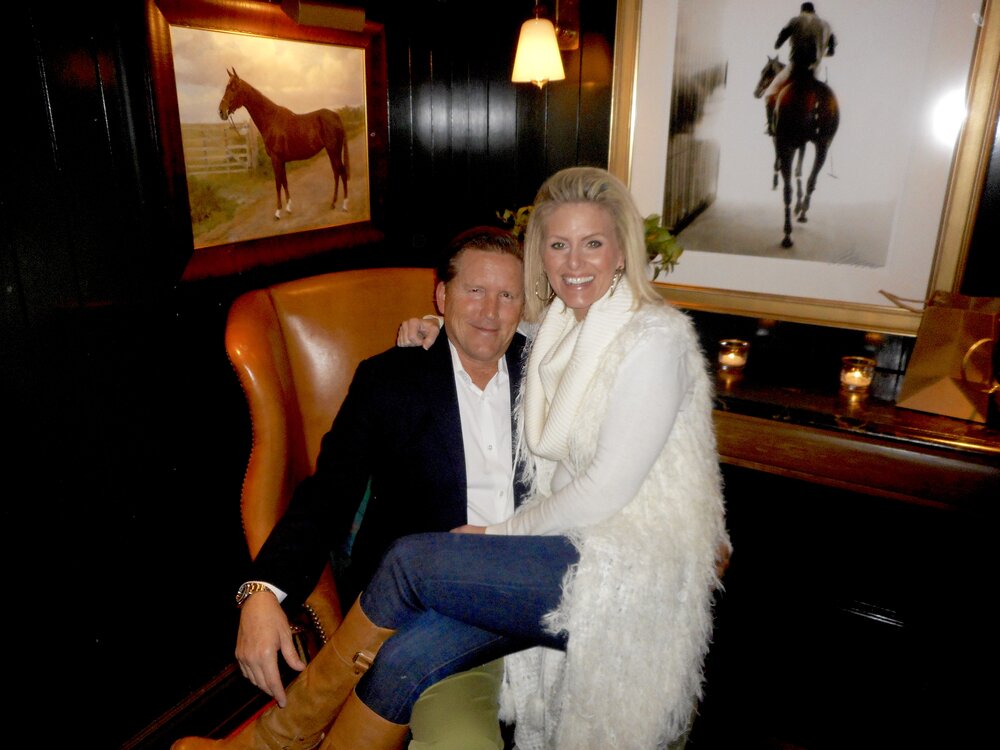
We thoroughly enjoyed our evening at The Polo Bar. It was the perfect kick off to a luxurious weekend in NYC and we highly recommend it the next time you're in town. HOWEVER, one important thing to note when making your plans is The Polo Bar has a MANDATORY reservation policy. So whether you plan on dining at the restaurant OR having a drink at the bar, reservations are REQUIRED.
A manager explained the policy is intended to preserve the experience for guests with reservations since space is extremely limited. So please be sure to plan well in advance the next time you're heading to NYC because the experience is definitely worth it. Plus, you never know when you'll run into royalty - Hollywood or otherwise!
The Polo Bar 1 E. 55th Street New York, New York 10022 212.207.8562

There's nothing better than curling up on a chilly Winter night with Steve and the puppies, a good movie (like Bohemian Rhapsody - AMAZING!) and a nice bottle of red wine. And if you're also a fan of indulging in delicious, full-bodied red wines this time of year, you won't want to miss my timely podcast interview with Christian Palmaz, CEO of Palmaz Vineyards, which is home to some of my favorite Napa Valley Cabernet Sauvignons.
Born in San Antonio, Texas to Argentine parents, Christian's family's has had a fascinating journey in the wine world, which began with his father's groundbreaking invention of the Palmaz coronary heart stent in the 1990's. Since then, two generations of the Palmaz family have sought to bring this familial spirit of innovation and invention to the ancient art of making wine. Their background in the sciences, passion for living life to the fullest and years of backbreaking work have resulted in a unique winery situated inside an 18-story cave that combines cutting-edge technology with a respect for winemaking tradition.
Simply click the link above to listen to the interview or click here to be taken to iTunes where you can also subscribe to The Wine Atelier podcast and leave a review, if you are so inclined.
1.) For more information on Tannins, please click here.
2.) The beautiful Palmaz book set: Book 1: "Tradition, Terroir & Technology," Written by Christian Gastón Palmaz & Nick Kolakowski; Book 2: "At the Table and Around the Fire," Written by Florencia Palmaz with Food Editor Kate Knapp
3.) Amalia and Florencia Palmaz's Goodheart brand
4.) My blog post on Red Wine 101
– To share your thoughts on this episode, please do so in the Comments section below.
– To spread the word about The Wine Atelier podcast, please share this show on Twitter, Facebook and/or Pinterest.
– If you enjoyed the show, please leave a review on iTunes where you can also subscribe so you won’t miss a thing!
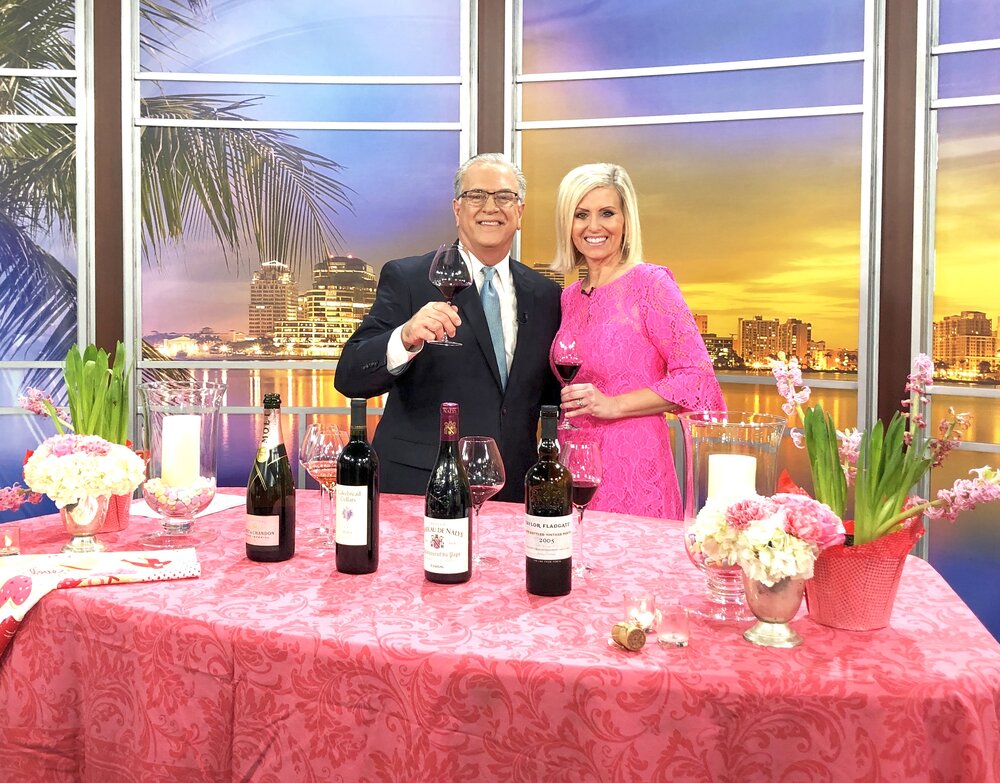
If you're looking for the perfect wines to set the mood for l'amour this Valentine's Day, check out my latest appearance on WPTV featuring my favorite Romantic Red Wines for Valentine's Day. In addition to the wine selections, I also explain the two reasons why red wines posses more aphrodisiac qualities than white wines and are naturally better for setting the mood for love.
The fabulous John Favole also asks some great questions about food pairings for these delicious wines so please check out the video below as well as the show notes below the video for all the details (and links to the food pairing recipes!).
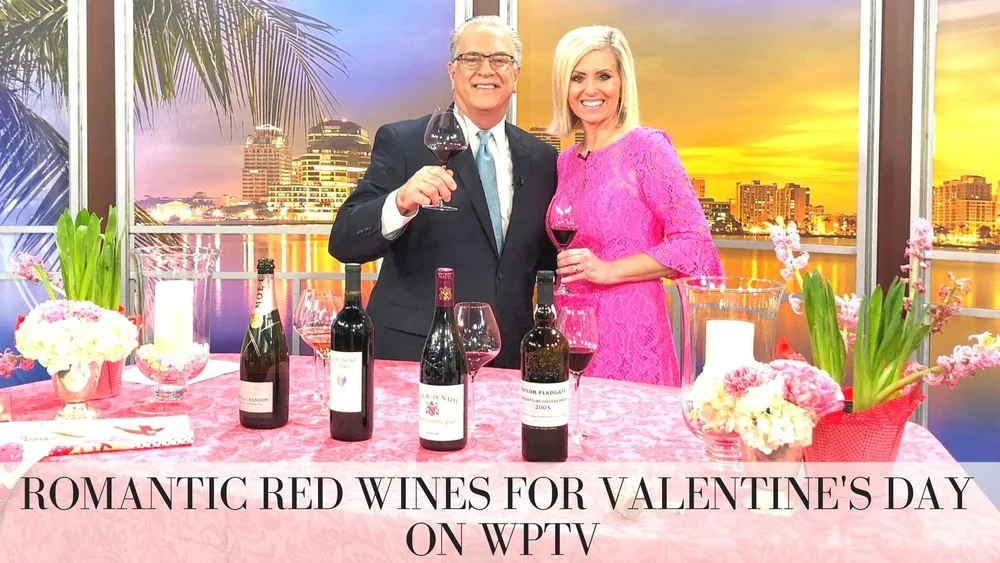
I hope you find my Romantic Red Wines for Valentine's Day recommendations helpful! Please see below for a list of all the wines featured in this episode as well as links to recipes.
This year's “Living Ties” Limited Edition bottle features beautiful black ties that represent the ties that bind together soulmates, family + friendships.
Made predominantly from the Pinot Noir grape, this beautiful pink Champagne gets its glorious color from the addition of 10% still red wine.
Enjoy this wine in a white wine glass (not a flute!) to fully appreciate the delightful aromas and flavors of the wine!
This delightful rosé Champagne has enticing notes of strawberries, raspberries, red currants, peach and a subtle note of spice and finished with a delightful crisp, dry finish!
Merlot is the perfect grape for Valentine's Day! It’s all about luscious, voluptuous ripe dark fruit like black cherry, blackberry and plum with an opulent, full-body.
Originally from France's Bordeaux wine region, Merlot gets hedonistically ripe in the warmer climates of California's Napa Valley.
This wine from the well-known Cakebread Cellars is a blend of 95% Merlot and 5% Cabernet Franc. It displays fragrant aromas of ripe black cherry, black currant and violet. It has rich, concentrated flavors of ripe blackberry, plum, black cherry and spice that fill the lush palate, framed by fine-grained tannins, culminating in a long finish.
Chateauneuf-du-pape produces delicious red wines from France’s Southern Rhone Valley. These wines are red blends that are predominantly based on the Grenache, Syrah and Mourvedre grapes although 13 grapes can legally be used.
This elegant, full-bodied stunner is crafted primarily from the estate's Old Vine Grenache with a dollop of Syrah, Mourvedre, Counoise and Vacarese which combine to create a rich, luxurious red wine.
This wine is full-bodied and velvety, with a lovely minerality and notes of dark cherry fruit, vanilla and sandalwood. Layers of spices including cinnamon, clove, licorice and allspice add depth of flavor and interest to the silky finish.
This is the most luscious of our featured wines and the most perfect for pairing with chocolate!
Port is a fortified wine (read this for more info) which means the wine has a higher alcohol content (approx 20%) and it is also lusciously sweet!
Unlike vintage Ports, Late Bottled Vintage Ports are bottled after 4-6 years in wood, giving them some of the characteristics of vintage Port but with less time required for bottle aging.
This wine has powerful, mouth-filling notes of dark cherry, ripe black fruit and chocolate with beautiful depth and complexity and a lengthy, spice-tinged finish.
Looking for romantic Valentine's Day dinner recipes for two? Check out these Fabulous Food Pairings:
This recipe for succulent Mustard Roasted Fish would be delicious paired with the Moët & Chandon Rosé Impérial Champagne!
Steak au Poivre à Deux with Roasted Rosemary Garlic Potatoes is perfect for pairing with the Cakebread Cellars Merlot or the Chateau de Nalys Chateauneuf-du-Pape!
Hoffman's DELIGHTFUL chocolates are perfect for pairing with the luscious Taylor Fladgate Port. For more detailed information on which chocolates pair best, please check out this video - OH the DECADENCE!!!
I hope you enjoy these Romantic Red Wines for Valentine's Day and I'd love to hear which wines are your favorites. If you enjoyed this video, please click here subscribe to my YouTube channel and/or click here to add your name to my weekly newsletter list. And most importantly, I hope you have a very Happy Valentine's Day!
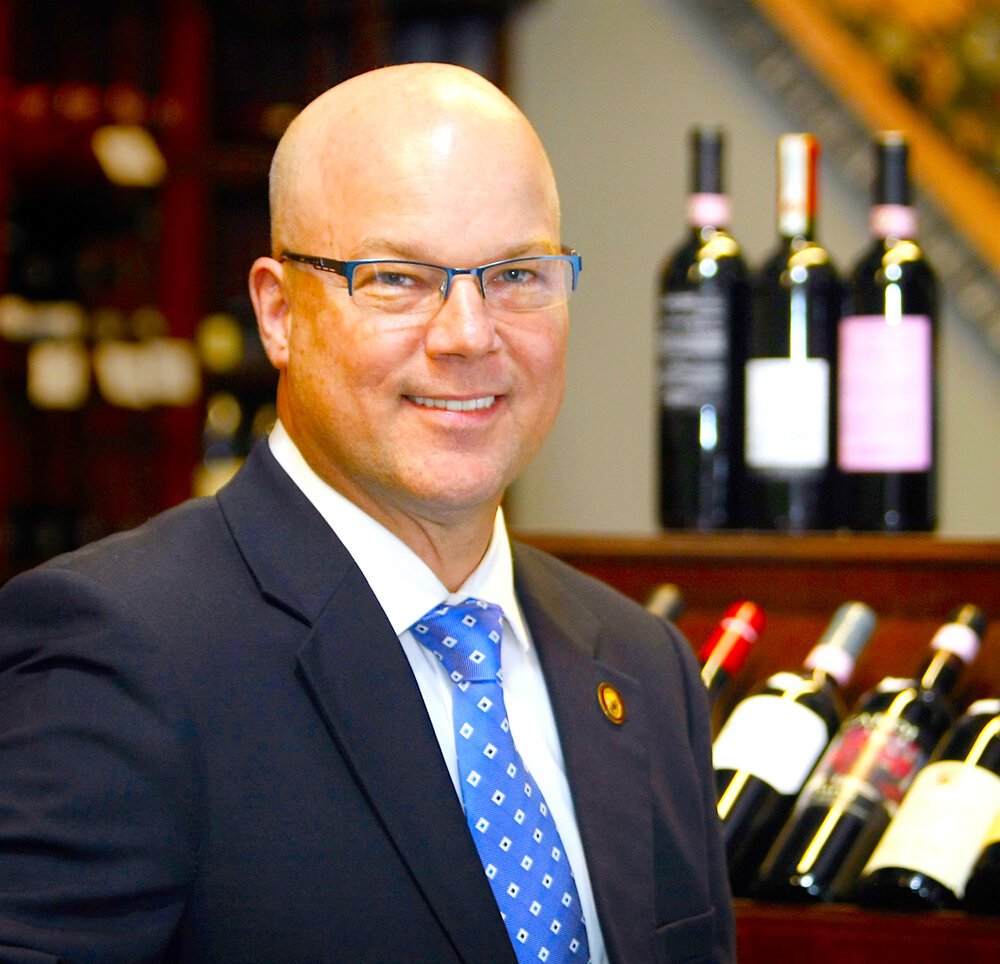
I can't think of a better way to kick off the New Year than talking 2019 Wine Trends with Master Sommelier and Master of Wine, Eric Hemer. Eric is one of only four people on the planet to have ever achieved both of these credentials. He's also Senior Vice President and Corporate Director of Wine Education for Southern Glazer’s Wine & Spirits of America. Talk about someone who has their pulse on what's going on in the world of wine!
But it's been a long road to get to this point in his career, and he'll be the first to tell you that.
Hemer has been with Southern Glazer’s for thirty years and started as a Fine Wine Consultant here in the Palm Beaches. He worked his way up, attaining his credentials along the way beginning with his Certified Wine Educator credential in 1999. After that, he achieved his Master Sommelier certification in 2003, and then his Master of Wine in 2013.
Currently, Hemer is actively involved as a lecturer, examiner and instructor with the Court of Master Sommeliers, the Institute of Masters of Wine, the Wine and Spirits Education Trust and the Society of Wine Educators. On this episode of the Wine Atelier podcast, he shares his predictions for 2019 Wine Trends including the future of rosé wine, the hottest up and coming region for sparkling wine, the type of red wine that's gaining in popularity and much, much more!
– To share your thoughts on this episode, please do so in the Comments section below.
– To spread the word about The Wine Atelier podcast, please share this show on Twitter, Facebook and/or Pinterest.
– If you enjoyed the show, please leave a review on iTunes where you can also subscribe so you won’t miss a thing!
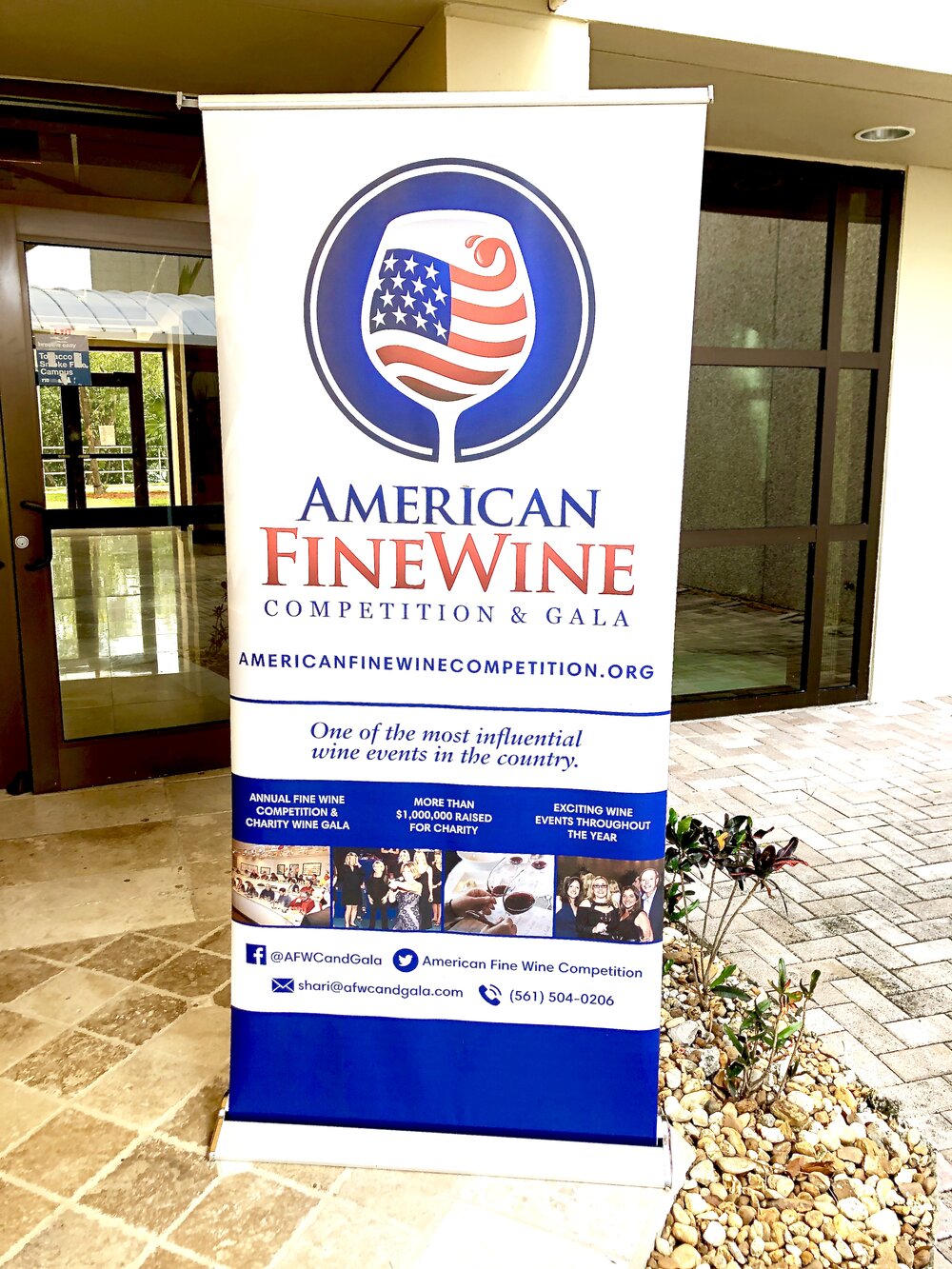
My fellow wine lover, it is with great pleasure that I reveal the results of the 12th Annual American Fine Wine Competition! As many of you know (especially if you're on Facebook or Instagram), the judging process took place last month at Florida International University’s Chaplin School of Hospitality.
And after two solid days of sipping, swishing and (mostly!) spitting we collectively judged over 700 wines from around country, thereby earning our indelibly purple-etched teeth. We tasted everything from Michigan Riesling to California Tempranillo hailing from both well established and up and coming wine regions. Given the exciting diversity of the entries, it’s always fascinating to learn the winners.
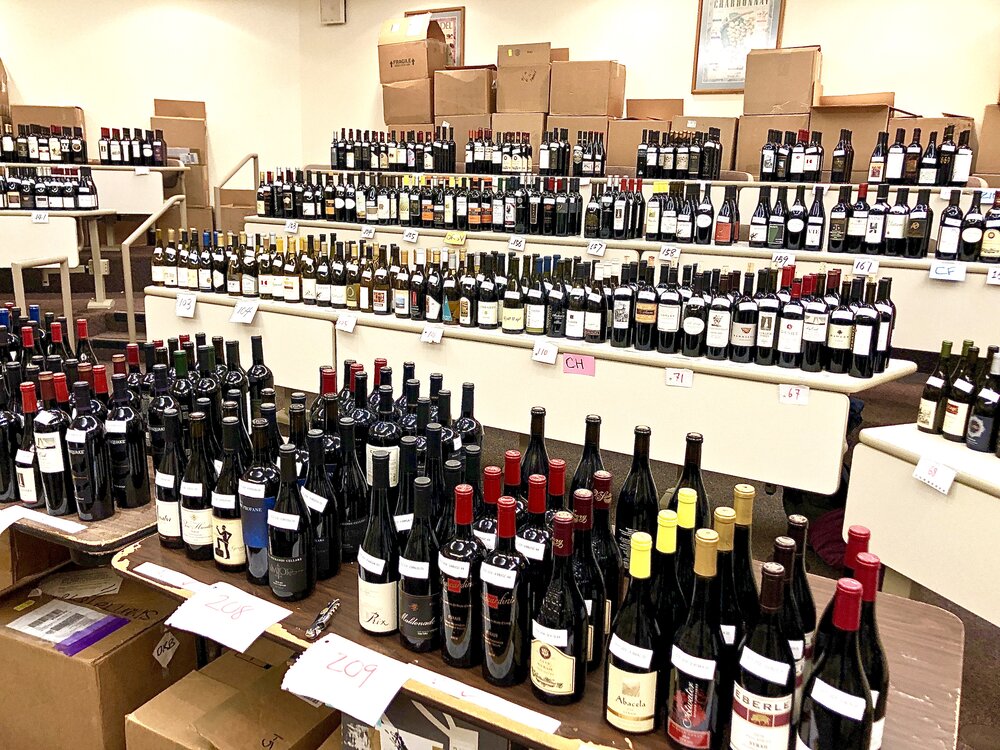
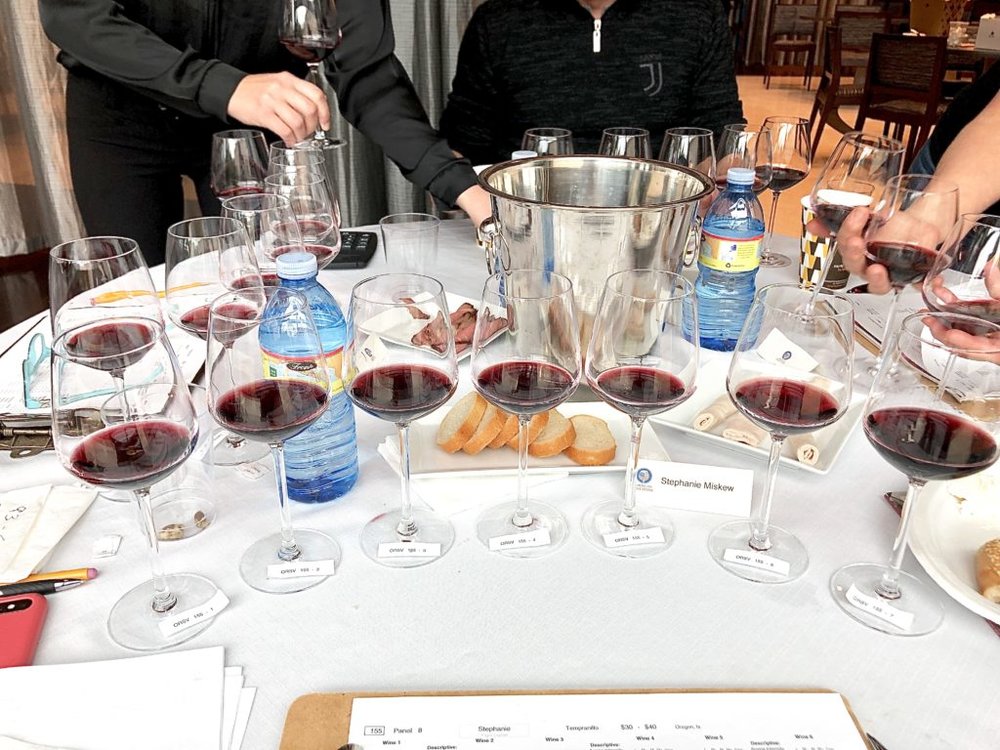
And in his third year as Chief Judge and Judging Coordinator of the AFWC, Greg Miseyko did a wonderful job presiding over the competition. Greg assumed the esteemed duties from competition Co-Founder Monty Preiser who still participates as a judge. And once again, Co-Founder and President, Shari Gherman executed the judges' tasting flawlessly. I continue to be amazed at how she choreographs the numerous flights of wines and their distribution to over 30 judges during the lengthy judging process - GO, Shari!
So without further ado, here are the results of the Best of Show and Best of Class categories for the 14th Annual American Fine Wine Competition. Please scroll all the way to the bottom for the link to the complete results:

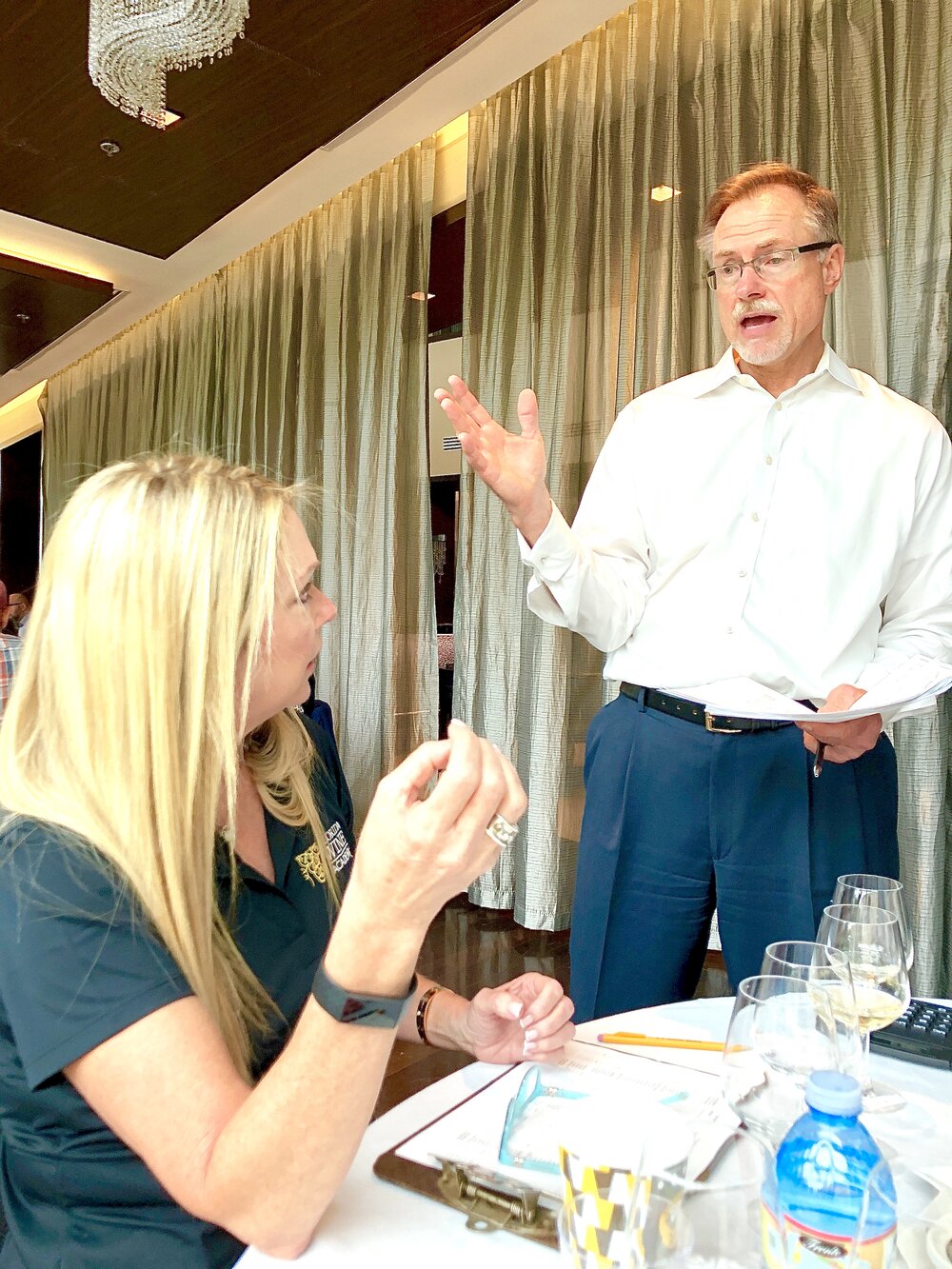
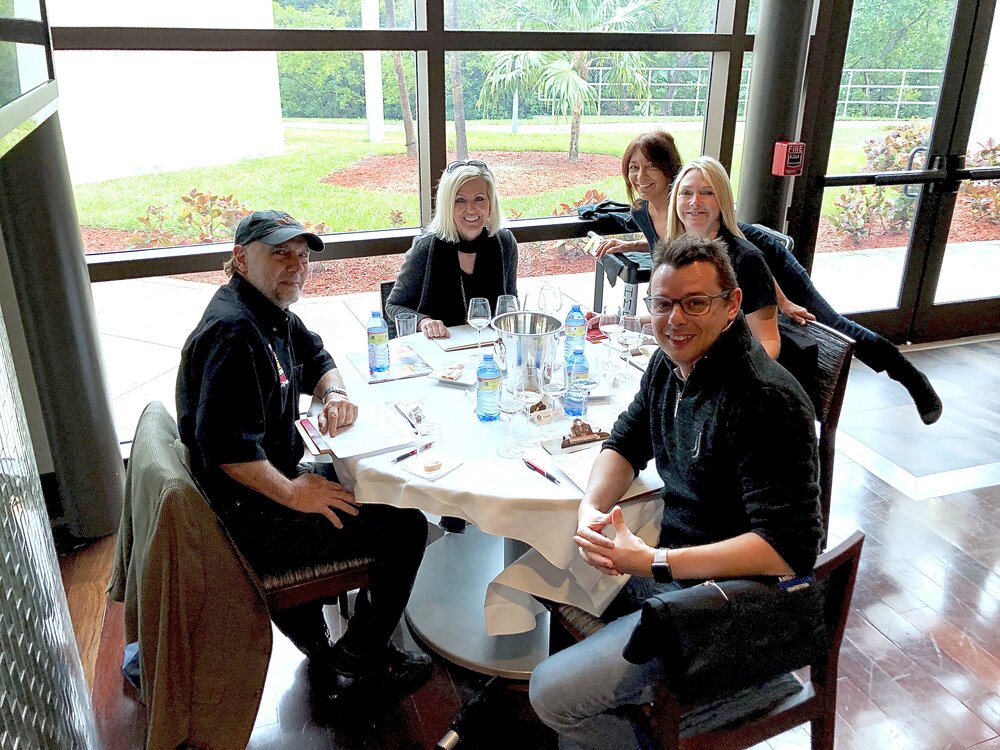
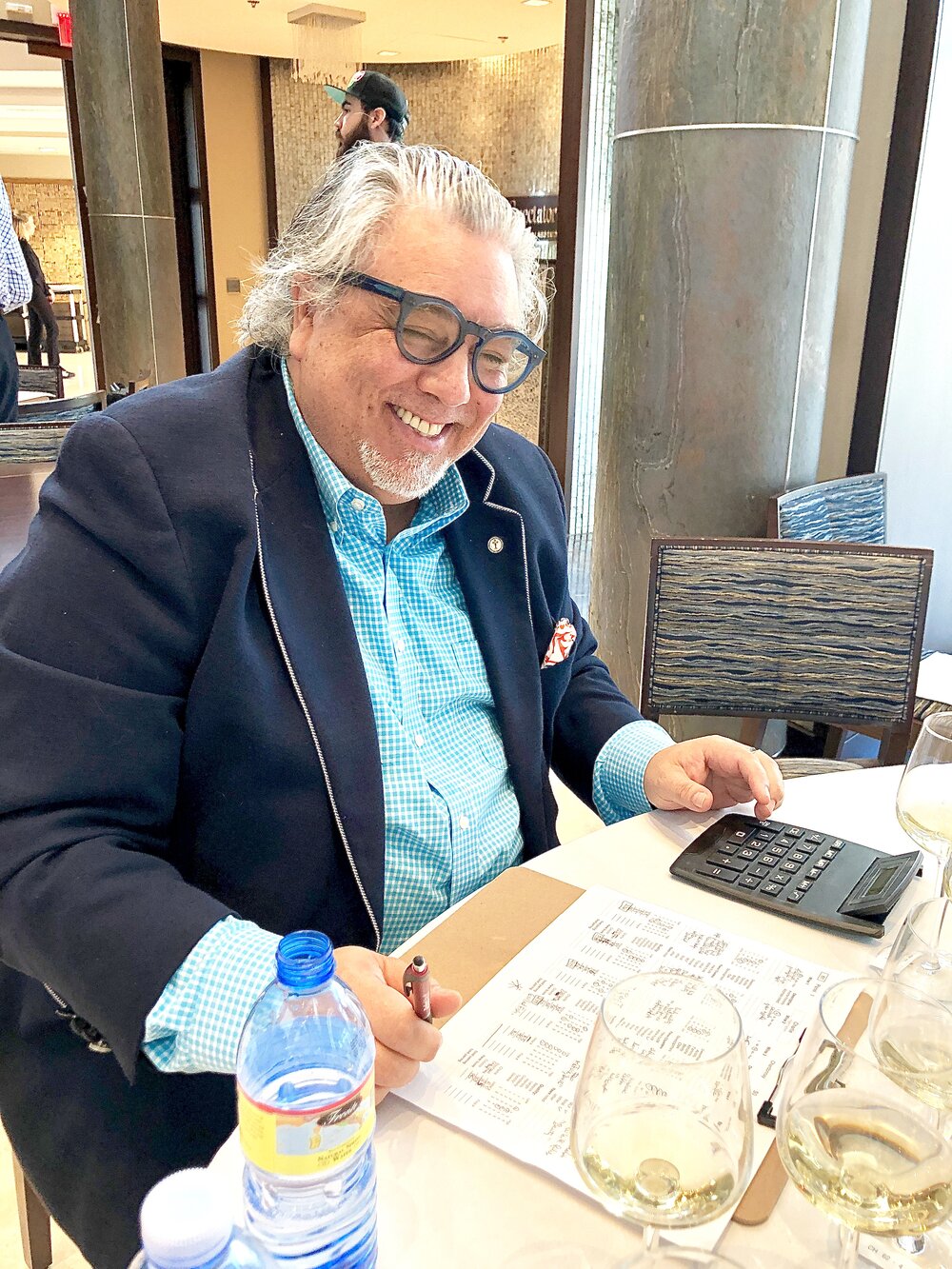
Best of Show Red Wine: Chase Cellars Stags Leap District Cabernet Sauvignon, Napa Valley, California, 2016 ($125)
Best of Show White Wine: Black Star Farms Arcturos Semi-Dry Riesling, Leelanau Peninsula, Michigan, 2016 ($14)
Best of Show Sparkling: Glenora Wine Cellars Brut, Finger Lakes, New York, 2013 ($30)
Best of Show Port: St. Amant Winery Lot #11 Amador County, Lodi, California, NV ($35)
Best of Class Cabernet Franc: Ancient Oak Cellars Alcaeus Cabernet Franc Sonoma Mountain, Sonoma, California, 2014 ($75)
Best of Class Bordeaux Blend: B Cellars Vineyards and Winery Blend 27 Napa Valley, Napa, California, 2016 ($87)
Best of Class Merlot: Raymond Vineyards Reserve Napa Valley Merlot, Napa, California, 2016 ($30)
Best of Class Petite Sirah: Ballentine Vineyards Pocai Vineyard Petite Sirah Calistoga, Napa Valley, California, 2016 ($45)
Best of Class Pinot Noir: Bee Hunter Wine Oppenlander Vineyard Pinot Noir, Mendocino, California, 2014 ($48)
Best of Class Syrah: Klinker Brick Winery Farrah Syrah, Lodi, California, 2015 ($20)
Best of Class Zinfandel: Michael David Winery Lust Zinfandel, Lodi, California, 2015 ($59)
Best of Class Other Red: V. Sattui Winery Entanglement GSM Blend, Napa Valley, California, 2016 ($40)
Best of Class Other White: Acquiesce Winery Belle Blanc Lodi Mokelumne River, Lodi, California, 2017 ($32)
Best of Class Sauvignon Blanc: Reustle Prayer Rock Vineyards Sauvignon Blanc, Umpqua Valley, Oregon, 2017 ($23)
Best of Class Chardonnay: Husic Vineyards Dutton Ranch Sonoma Coast Chardonnay, Sonoma, California, 2016 ($50)
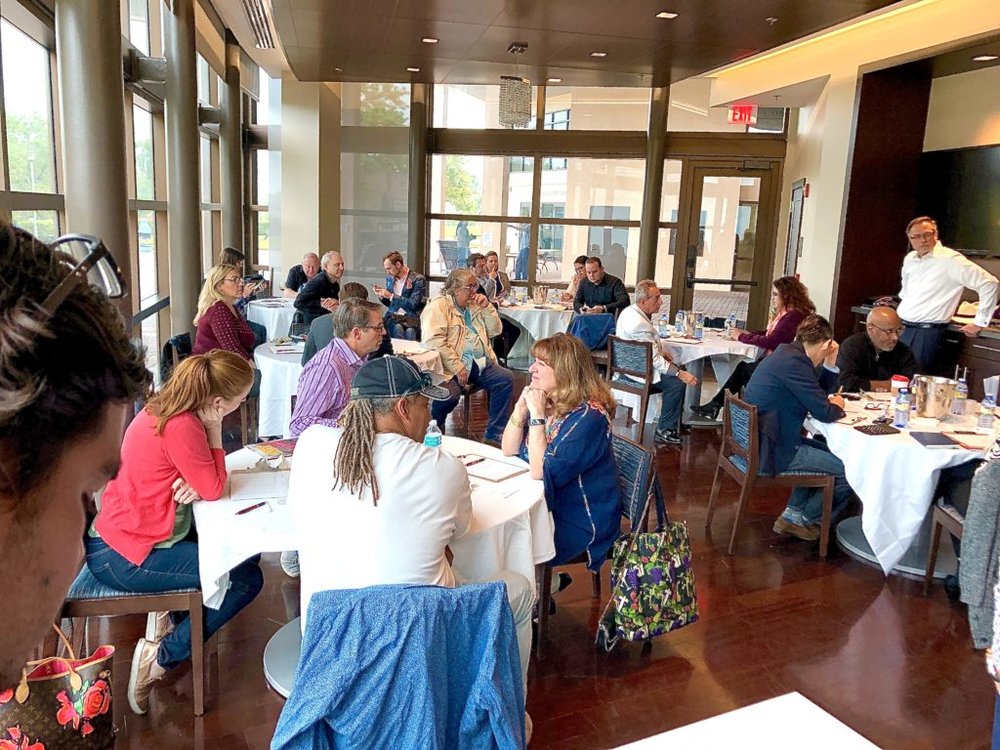
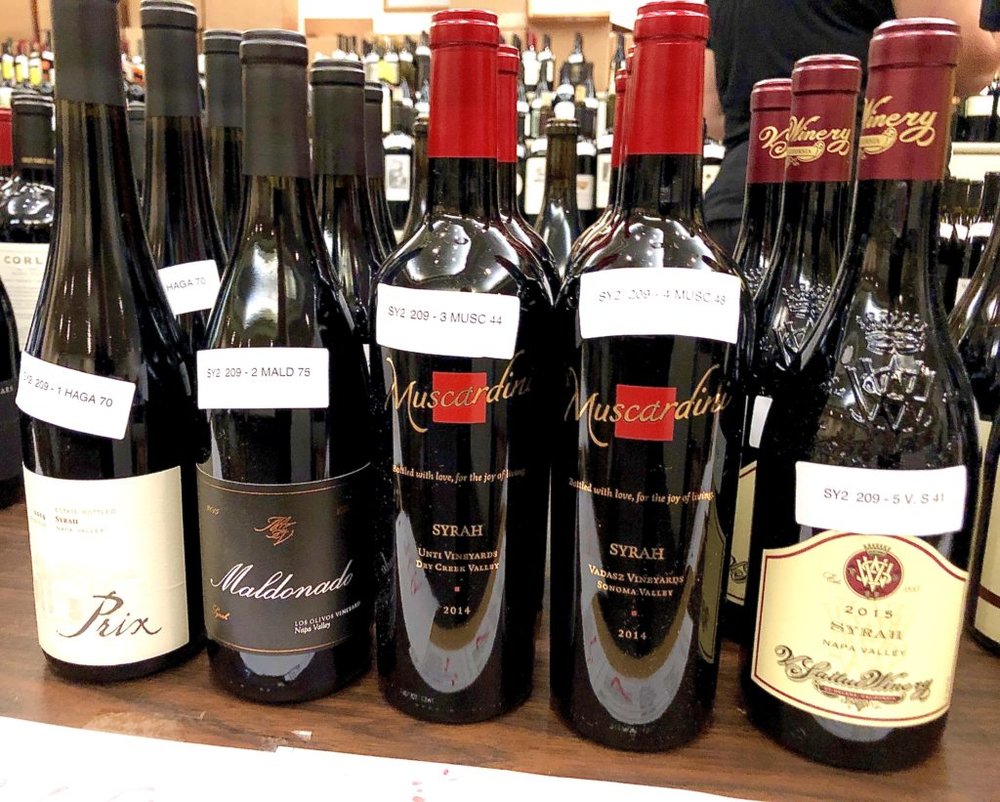
To view the complete list of results from the 12th Annual American Fine Wine Competition, please click here. Also, for more information on upcoming AFWC wine events, including the AFWC Gala, be sure to check out their calendar by clicking here.
Also, if you have any questions about any of the wines listed here or you'd like to share your thoughts, please feel free to message me in the comments sections below. To see results from previous years of the American Fine Wine Competition, simply click here.
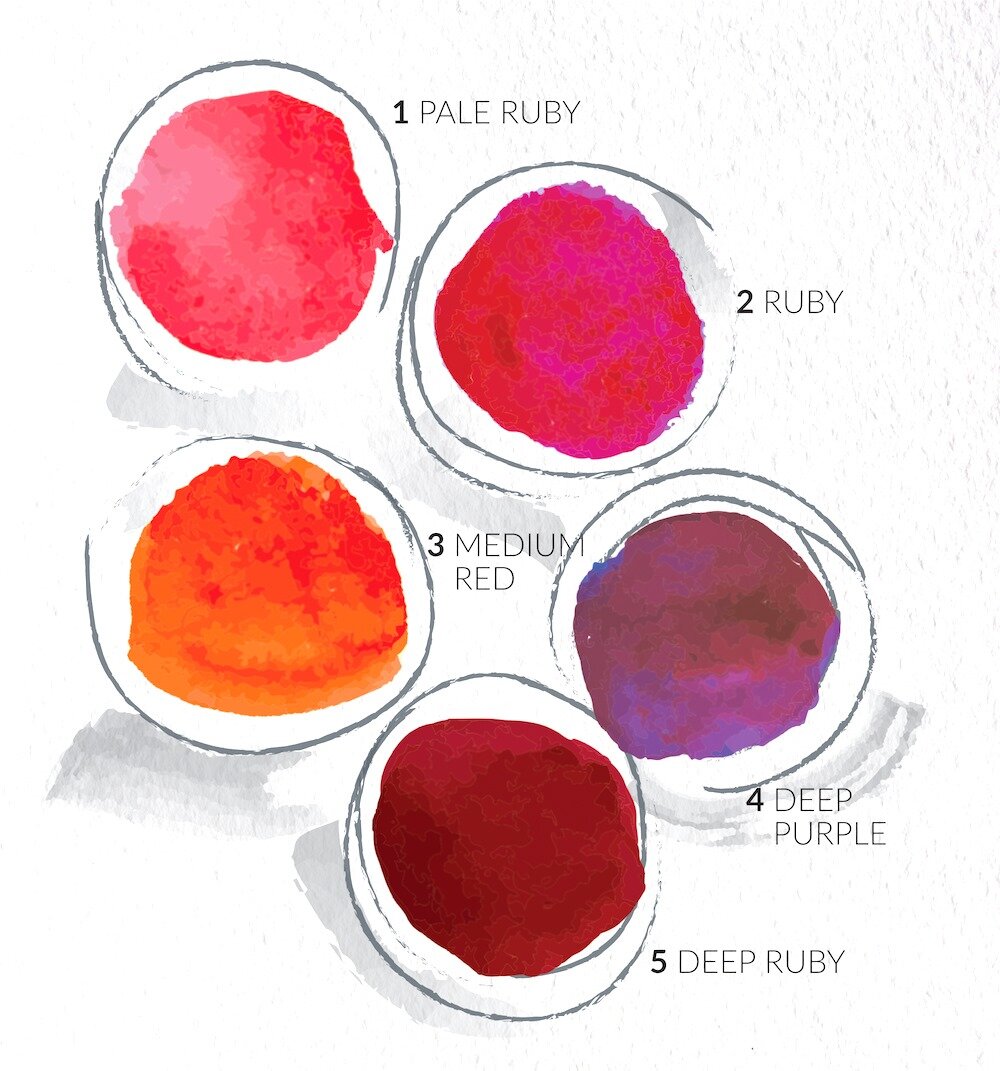
Despite what those wine snobs like to believe, no one can know ALL there is to know about wine. But that’s part of the beauty of this expansive topic! And if you’re new to wine, I appreciate how daunting it can be knowing exactly where to “jump in.” So if you find yourself in this vinous quandary, I'm happy to help with the perfect starting point - my two companion blog posts: White Wine 101 which I posted last week and this week’s post, Red Wine 101!
Beginning with the basics is always a great way to start and after reading these two posts you'll know:
The important differences between white and red wine production
The most popular grape varieties you'll encounter on wine lists and at your local wine or grocery store
Which well-known producers to look for when shopping for a particular grape variety or style of wine
Delicious food pairing suggestions and recipes
Helpful lingo that'll have you "Talking the Talk" of both red and white wine in no time!
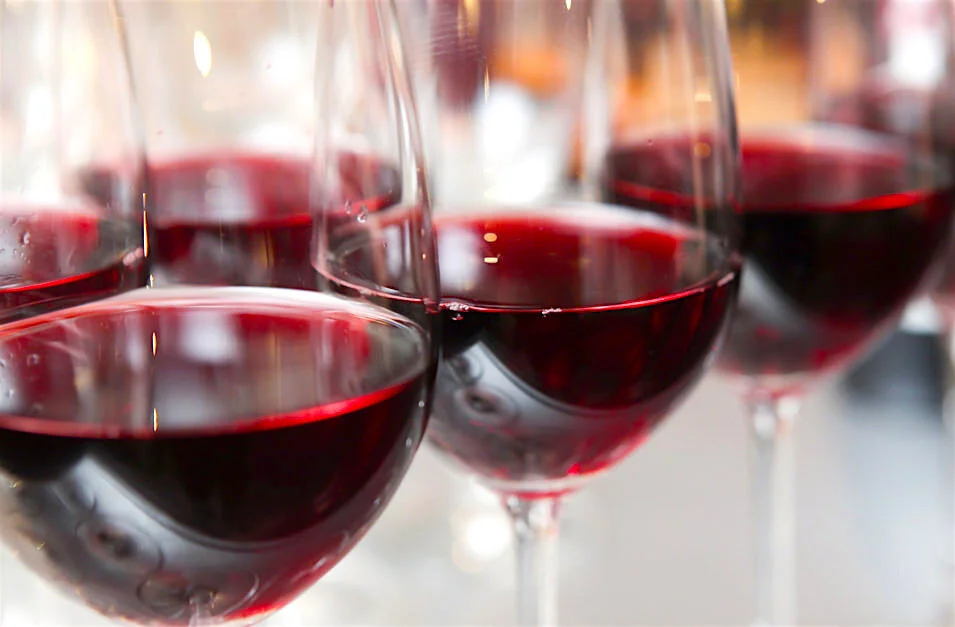
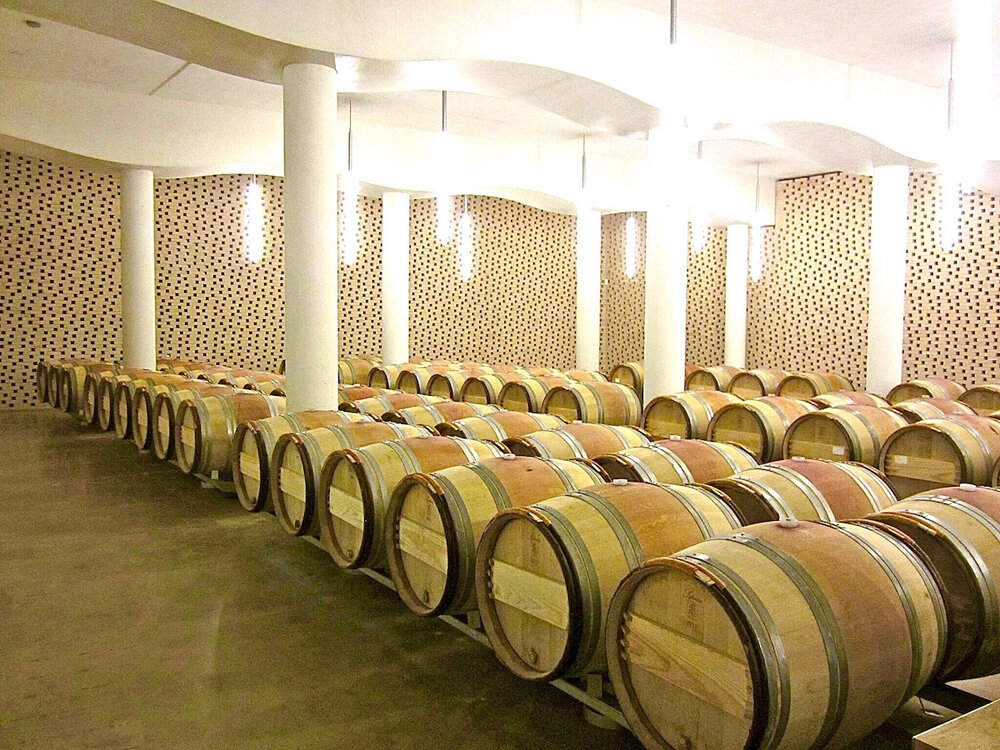
Before we dive in, I wanted to debunk some commonly held misconceptions about red wine:
Only about 3-5% of ALL wine produced improves with age so do NOT think you have to wait for all red wines to "age" before you drink them. But how can you tell if a red wine is an age-worthy one? If the wine is sealed with a screwcap, and/or falls within the $25 and under price category, go ahead and drink away. Red wines intended for aging are usually $35 and over and are generally always sealed with a cork to allow oxygen transfer to occur.
Removing the cork of a wine from a wine bottle does NOT allow a red wine to “breathe” and will do nothing to help it "open up." The only way to do this is to decant the wine, a process in which the liquid is infused with oxygen by pouring it from the bottle into a decanting vessel such as a crystal wine decanter (recommended) or a flower vase. For more on the benefits of decanting and how it's performed, please scroll down to "Talking the Talk."
If you suffer from the dreaded Red Wine Headache (RWH), it is NOT the sulfites that's causing them! White wine has almost twice the sulfites of red wine and while there's still some debate as to which exact chemical causes them, you have a better chance of avoiding these headaches by opting for lighter-bodied, lower tannin red wines like Pinot Noir or Gamay which contain lower amounts of these chemical suspects.
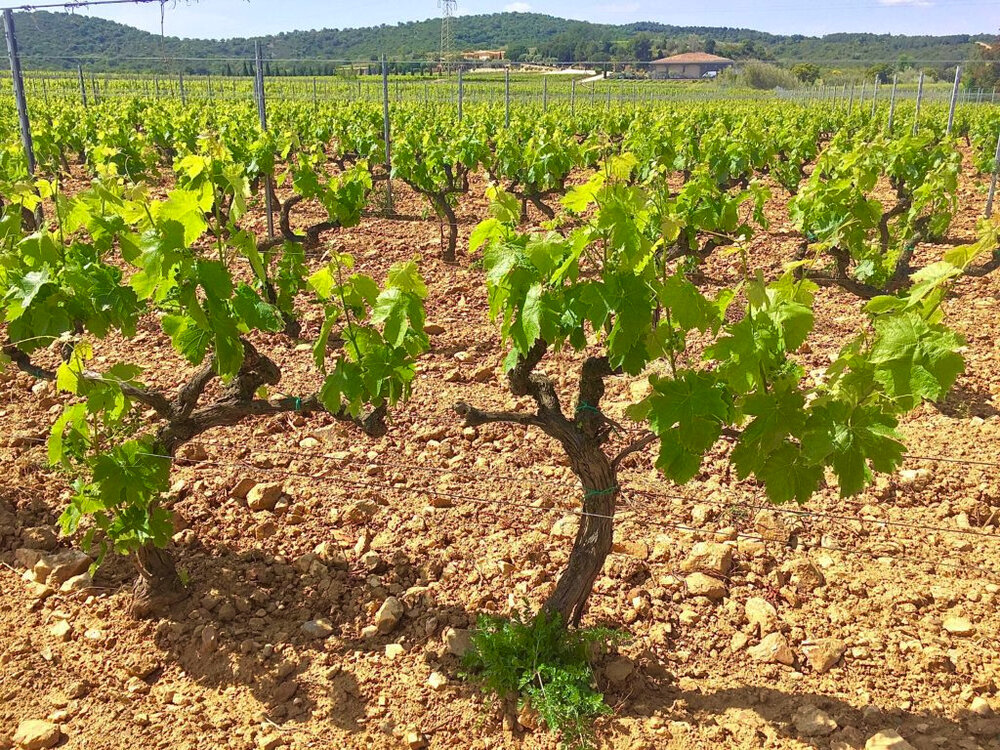
As I mentioned in White Wine 101, before we get into the differences between white wine and red wine, let's talk about what they have in common first, namely: fermentation! Please check out my previous post for more on this simple, yet critical chemical process. While white and red wines do have fermentation in common, red wine differs from white wine in a few important ways:
MACERATION: This is perhaps the major defining difference between white and red winemaking. In white winemaking there's essentially no contact between the grape juice and the skins, a process called maceration. However in red wine production, maceration is the manner by which important phenolic compounds are infused into the wine through contact with grape skins, stems and seeds. These compounds which include tannins and anthocyanins are responsible for a red wine’s color, flavor profile and mouthfeel. The duration of maceration is determined by the winemaker depending on the style of wine he is trying to make.
GRAPE VARIETIES: Since the color of red wine is largely determined by the color of the grapes used to make it, red wine is generally made using only red grape varieties. The more intense the color of the grape, the more intense the flavor and color of the finished wine. White wine on the other hand, is made from white grapes, and while it is possible to make white wine from red grapes, this process is usually only reserved for sparkling wine production. For more on that, please check out this post.
WARMER FERMENTATION: Unlike white wines which undergo cooler, temperature-controlled fermentations which run around 50-60 degrees, red wine fermentation run much warmer at approximately 60-95 degrees. The warmer temperature facilitates the extraction of color, tannin and other beneficial phenolic compounds which are important in the finished red wine.
MALOLACTIC FERMENTATION: While we hear about this secondary fermentation being used in the production of buttery Chardonnays, it is actually crucial to the production of most red wines as well. During this process, lactic bacteria converts harsh, bitter, malic acid into creamy, buttery lactic acid which makes the wine more palatable and imparts a richer, creamier mouthfeel. So the next time you pop the cork (or screwcap) off a bottle of Australian Shiraz and smell buttered popcorn, now you'll know why!
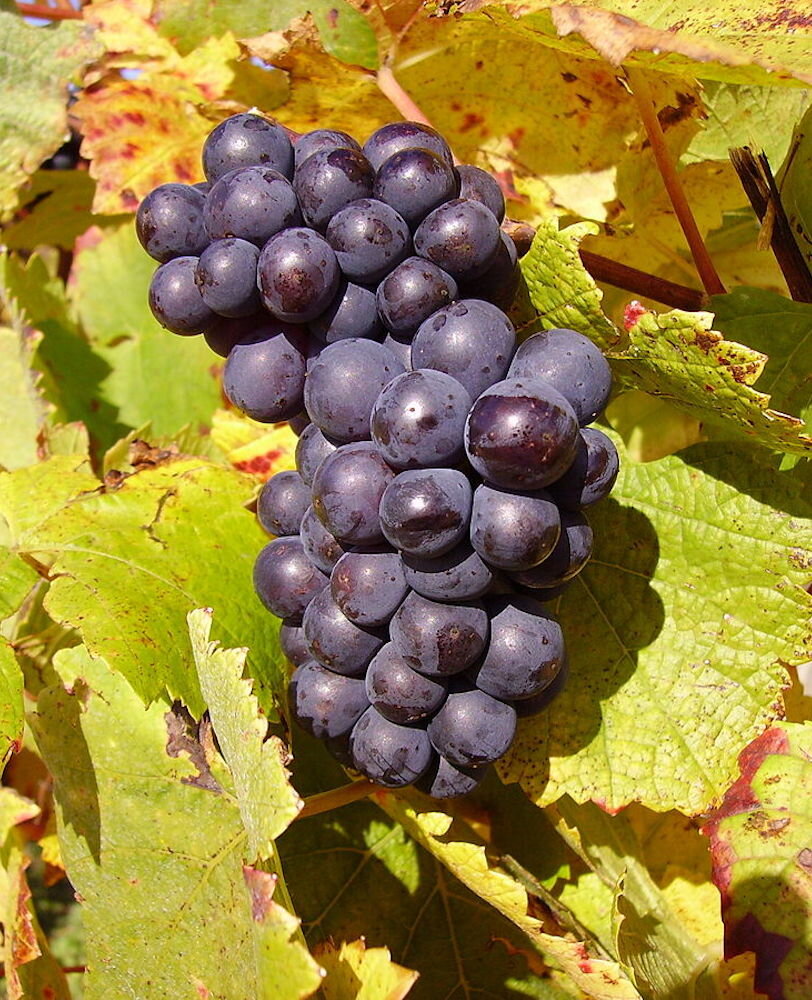
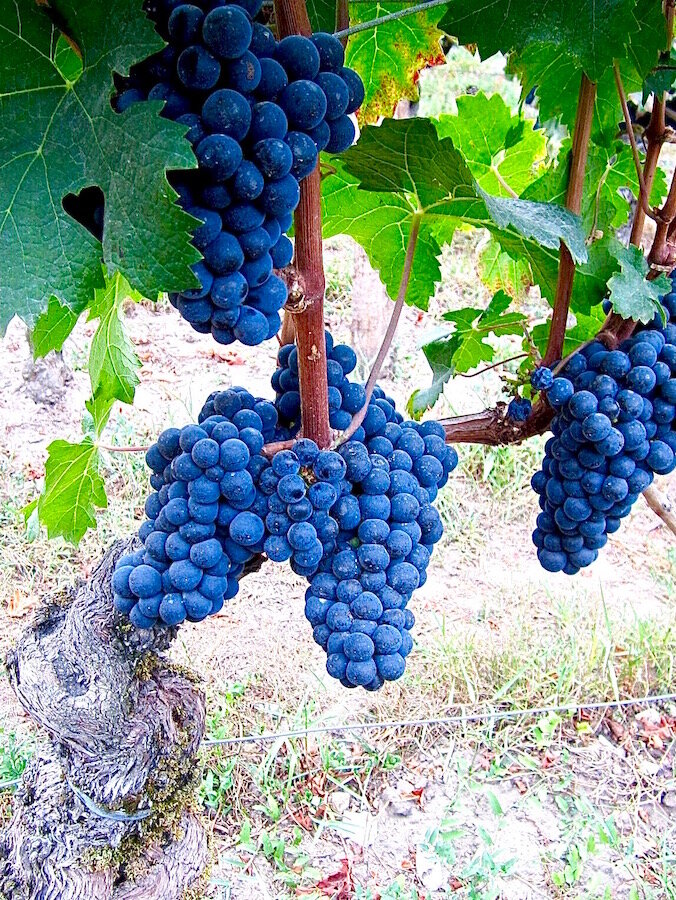
Stylistically speaking, red wines can range from light and fruity to full-bodied and tannic. This largely depends on the grape variety used to make the wine, as well as where the grapes were grown. Below are the top 5 red “cornerstone” grape varieties you're most likely to encounter on restaurant wine lists as well as in your local retail or grocery store. I’ve included information about each grape’s hallmark flavor profile, which foods you should pair them with and a few of my favorite bottles to try. And always remember, if you can’t find the exact wines listed, be sure to ask someone at your local wine shop to suggest a similar alternative:
1.) PINOT NOIR (Burgundy, California, Oregon): This delightful, yet difficult to grow grape variety produces lighter-bodied red wines that are velvety and delicious with notes of cherries, raspberries, earth and spice. It is the legendary grape of France's famed Burgundy wine region, but it also does well in California and Oregon as well. Since Pinot Noir is infamously finicky and a challenge to produce, this is one grape variety where you might want to spend a little more money to get a good bottle. If you’re in the mood to splurge, Pinot’s the place to do it:
PAIR WITH: Pinot Noir is one of the most versatile food pairing grapes on the planet. This is largely due to it's fruity flavor profile, lighter body and friendly, supple tannins. For that reason it pairs brilliantly with dishes ranging from grilled fish to a Burgundian classic like Coq au Vin. It also pairs nicely with difficult to match veggies like Brussels sprouts, beets and broccoli rabe.
GG FAVE PINOT NOIRS (please click on name of wine for purchasing information):
2.) MERLOT (Bordeaux, California, Italy): Since falling from grace in 2004 as a result of Mile's “Merlot-phobia” in the movie "Sideways," I'm happy to report Merlot has officially made a comeback! And why shouldn't it? Merlot is SO easy to love with its lush, plush notes of dark, ripe fruit and uber-alluring tannins. And while it originated in Bordeaux, France where it is still the most widely planted grape today, Merlot performs well in many exciting wine making regions around the world. So if you prefer bold red wines with oodles and fruit and firm, yet supple tannins, it's time to give Merlot another try!
PAIR WITH: Merlot is a lush, full-bodied red wine with lots of ripe fruit which make it perfect for pairing with savory, flavorful fare like burgers and BBQ as well as more refined dishes like seared duck breast with blackberry gastrique and roast leg of lamb.
GG FAVORITE MERLOTS:
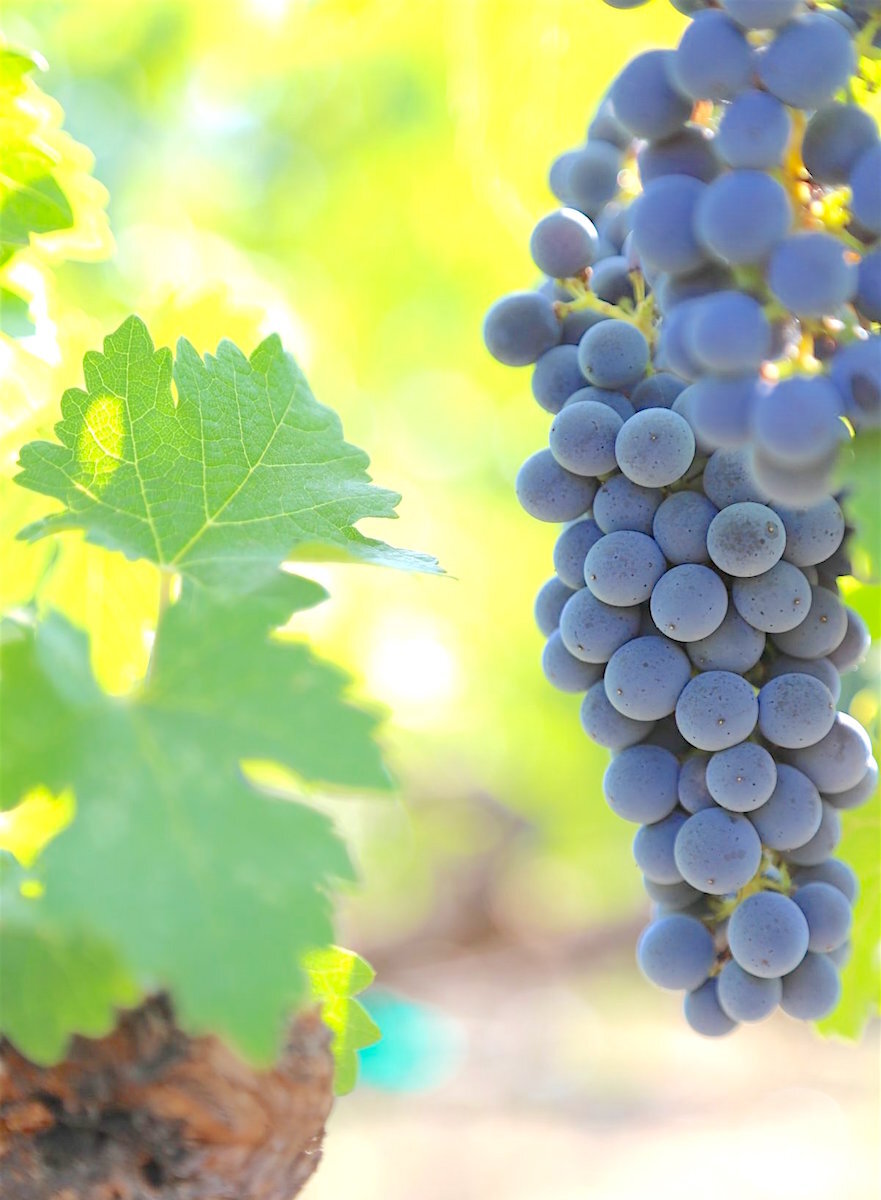
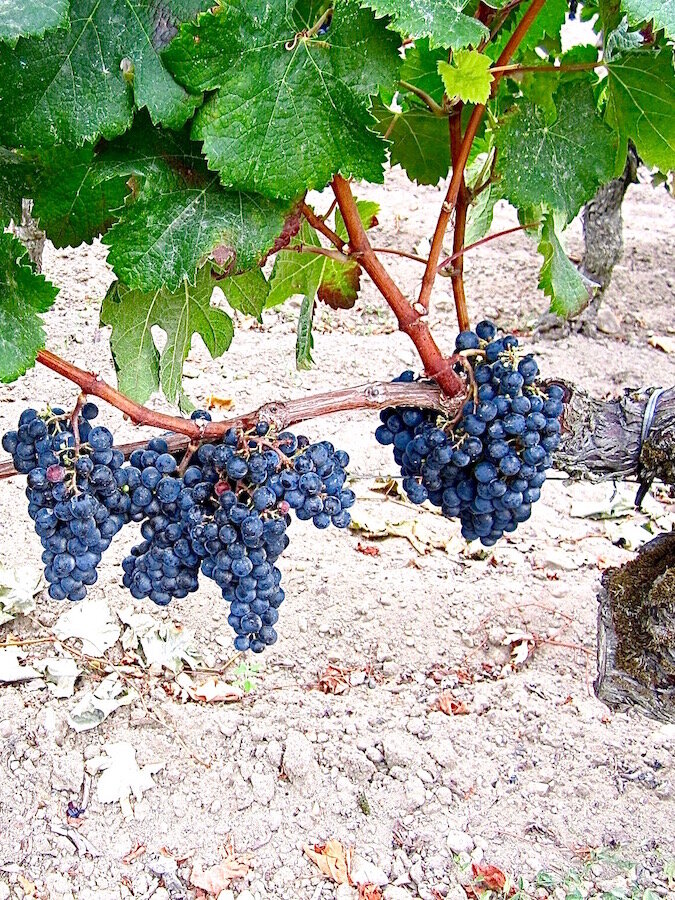
3.) CABERNET SAUVIGNON (Bordeaux, California, Italy): This legendary grape is the basis of many of the most expensive and age-worthy red wines on the planet - most notably in the Bordeaux region of France and California's Napa Valley. This is largely due to its reliably high levels of tannin which contribute greatly to a wine's overall structure and ageability. That being said, wines made from the Cabernet Sauvignon grape are available at many price points and the resulting wines display flavors ranging from tart red currants and graphite to rich blackberry, plum and cocoa depending on where it is grown. So for those of you who adore big red wines with intense tannins, Cabernet Sauvignon is the grape for you!
PAIR WITH: Cabernet Sauvignon is best matched with dishes that are equally as hefty as the wine itself - anything lighter would simply get blown away by its sheer power. Opt for dishes which are relatively high in fat and flavor such as a juicy, flavorful New York strip steaks, braised beef short ribs or savory grilled lamb chops.
GG FAVORITE CABERNET SAUVIGNONS:
Round Pond Kith & Kin Cabernet Sauvignon, Napa Valley, California ($38)
La Jota Howell Mountain Cabernet Sauvignon, Napa Valley, California ($99)
4.) SYRAH (Rhone, California, Washington): This intense red grape is the source of some of the most robust, deeply colored, full-bodied red wines on the planet. While is can be found as a varietal wine, Syrah is usually blended with other grapes (both red AND white!) to round out its spicy, exotic flavor profile. In cooler climates such as France's Rhone Valley, Syrah produces bold, complex wines with notes of black and red fruit accompanied by savory notes of herbs, bacon fat and olive tapenade. In warmer climates like Australia and South Africa where it is know as "Shiraz," Syrah produces lush, sometimes jammy wines with notes of cherry, blackberry and chocolate with a spicy, peppery finish.
PAIR WITH: Full-bodied Syrahs are perfect for pairing with luscious, flavorful dishes such as BBQ, burgers, braised beef dishes, juicy steaks and savory roasted leg of lamb.
GG FAVE SYRAHS:
5.) CABERNET FRANC (California, Bordeaux, Australia): Cabernet Franc, along with Sauvignon Blanc, is a parent of the Cabernet Sauvignon grape and while it might not be quite as popular, it is certainly worth exploring! While it can be found as a varietal wine in places like France's Loire Valley and California's North Coast, Cab Franc is usually a part of a blend, most notably in Southwest France where it is one of the five classic Bordeaux grape varieties. Here it is most popular on the famed Right Bank where it is usually blended with Merlot, most notably in Saint Emilion at the legendary Chateau Cheval Blanc. Cab Franc can display very different aromas and flavors depending on the climate in which it is grown. Cool climate Cab Franc displays notes of tart cherry, sweet herbs and mushroom accompanied by a delightful earthiness, while in warmer climates it reveals the grape's capacity for red berry fruit such as cranberry, pomegranate and strawberry along with notes of moss, forest floor and black tea.
PAIR WITH: This medium-bodied red pairs nicely with a wide variety of dishes such as Roast Chicken with Mushrooms, Provençal inspired Pork Chops, grilled Filet Mignon and hearty soups and stews.
GG FAVORITE CABERNET FRANCS:
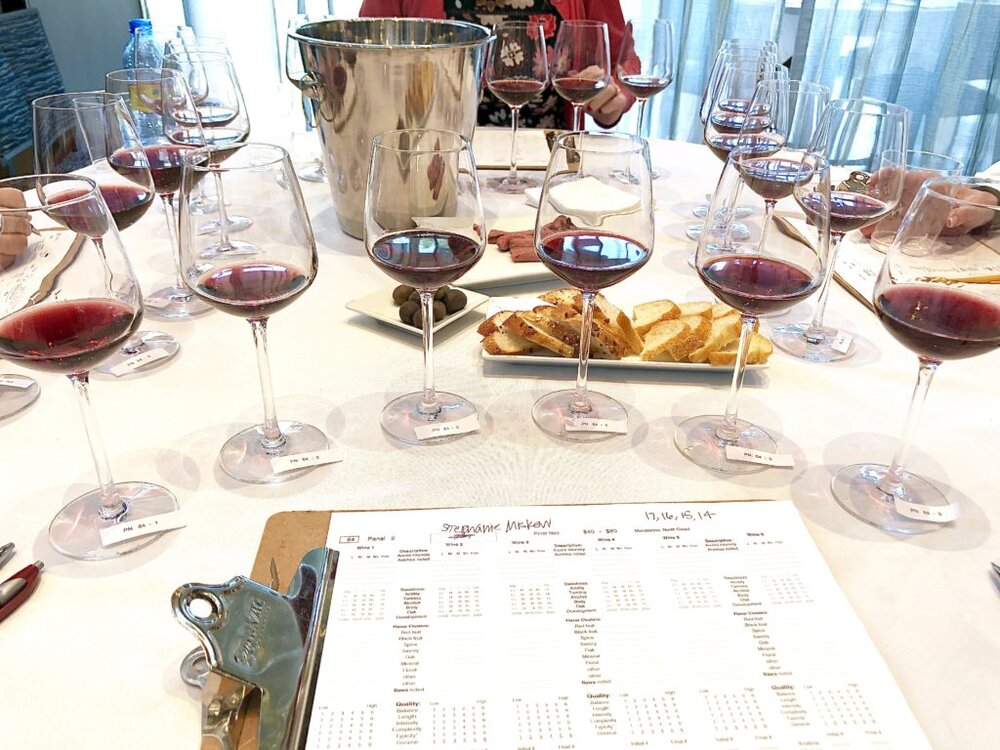
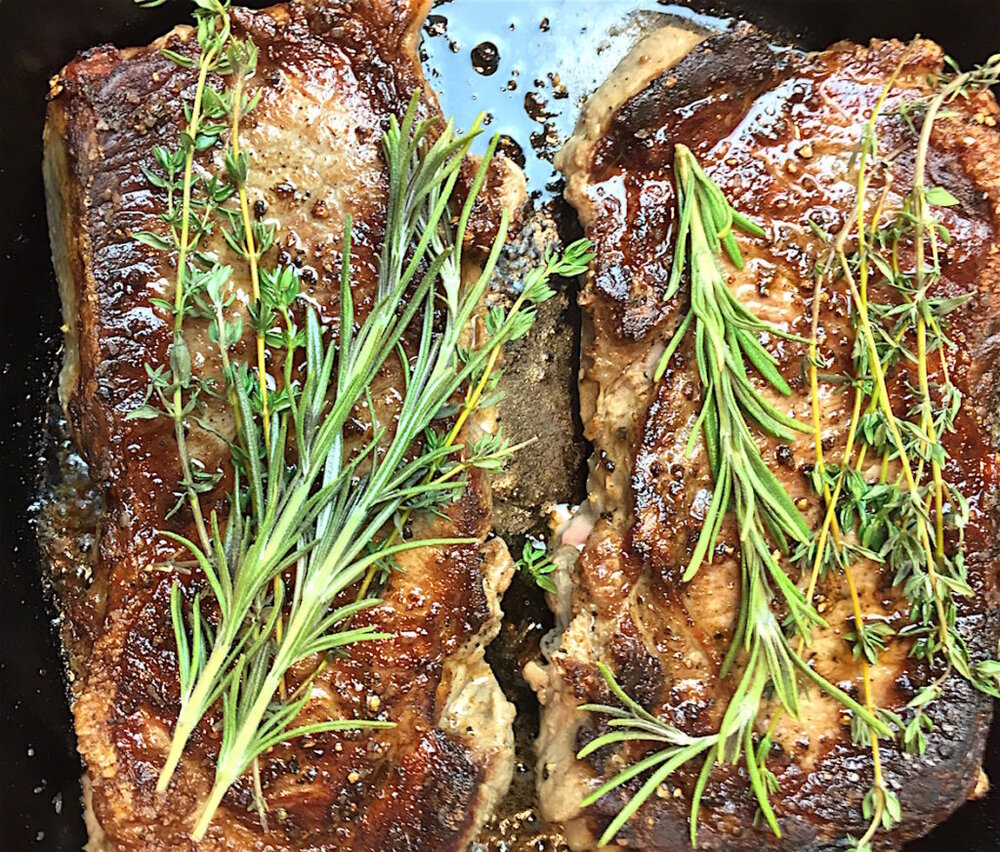
As with any type of wine, red wine has it’s own “lingo.” These terms refer to different winemaking tools or specific vinicultural techniques employed by winemakers when making this type of wine. No Red Wine 101 post would be complete without a list of those you’re most likely to encounter when talking about red wine:
TANNINS: These phenolic compounds set red wine apart from white wine and are imparted into red wine from its grape seeds, skins and stems as well as time spent in oak barrels. Tannins allow red wine to age with grace because they act as a preservative. They also add critical texture and mouthfeel to red wine, so when you feel the sensation of the moisture being sucked out of your mouth or a chalky feeling on your tongue after tasting a red wine, that’s the tannins!
SEDIMENT: As red wines age, their tannins tend to bind up with color molecules and precipitate out of solution and collect at the bottom of the bottle. Sediment is the layer of small, sand-like particles you encounter in these aged red wines. Generally, the more tannic the wine, the more sediment you’re likely to encounter. While sediment won’t hurt you if you drink it, the texture can be off-putting so it is often advisable to decant wine off of its sediment before drinking it, although in very old wines, always taste the wine first! While all young, tannic red wines can handle the sudden infusion of oxygen that occurs during decanting, old wines tend to be more fragile.
DECANT: Decanting is the process of transferring a wine from the bottle into a crystal decanter and there are two main reasons to do this: (1) decanting a youthful, tannic red wine infuses it with oxygen thereby softening its harsh tannins and making its aromas and flavors more readily perceptible. A super creative option popularized by Nathan Myhrvold in his books Modernist Cuisine utilizes a blender to "hyperdecant" young red wines - for my video demonstration of this process, please click here or click play on the video above, and (2) as red wines age, sediment often forms at the bottom of the bottle. These older red wines often need to be decanted off of their sediment for maximum enjoyment. While decanting a youthful red wine should be done vigorously, decanting an older red wine is a more delicate process. You don't want to risk over oxygenating the wine or stirring up the sediment.
OAK: The majority of red wines receive some degree of oak treatment during which the wine actually spends time in an oak barrel. While there are quite a few different types of oak, the most popular are French and American. French oak is used with the majority of red grapes such as Pinot Noir, Cabernet Sauvignon, Merlot and Cabernet Franc. It imparts notes of baking spices (i.e. clove, nutmeg) and vanilla to a finished wine. American oak, on the other hand, has a special affinity for certain red grapes such as Tempranillo and Zinfandel and manifests in the finished wine as notes of dill pickle, coconut and sweet vanilla.
RESVERATROL: This natural phenolic compound found in red wine is believed to have heart-healthy properties which help prevent damage to blood vessels, reduce bad (LDL) cholesterol and prevent blood clots although it’s not entirely understood how this works. Resveratrol is also found naturally in peanuts and berries which aren’t nearly as much fun and you can now find it in skincare products such as the Caudalie line as well!
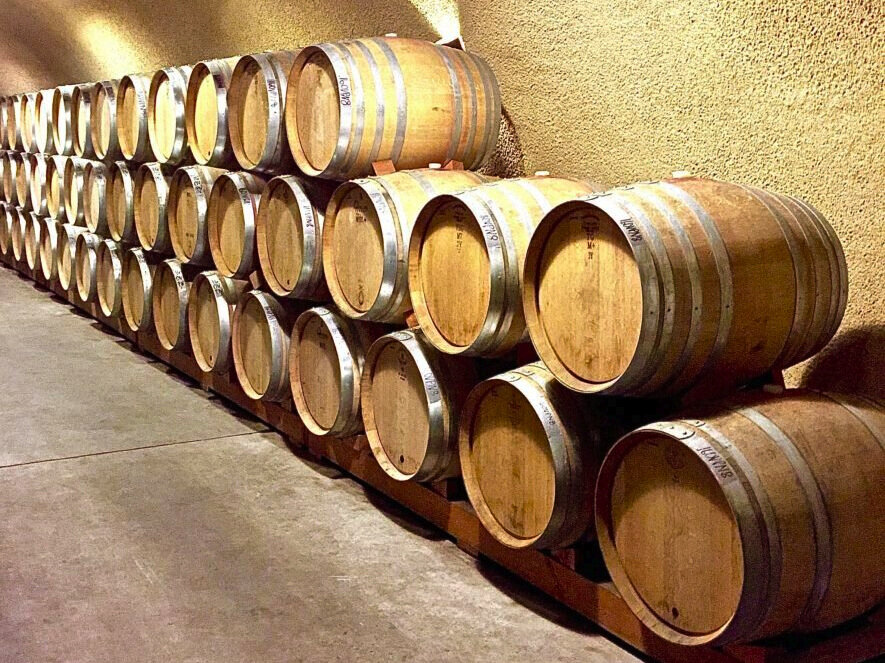
I hope you found my post on Red Wine 101 helpful in your understanding of this delightful, and imminently enjoyable wine. For even more on the topic, please check out my podcast episode, Red Wine 101, where I answer some interesting viewer questions and dish on some humorous personal experiences as well. If you missed my previous post, White Wine 101, please click here to get all caught up and check out some of my favorite Winter White Wine Recommendations as well!